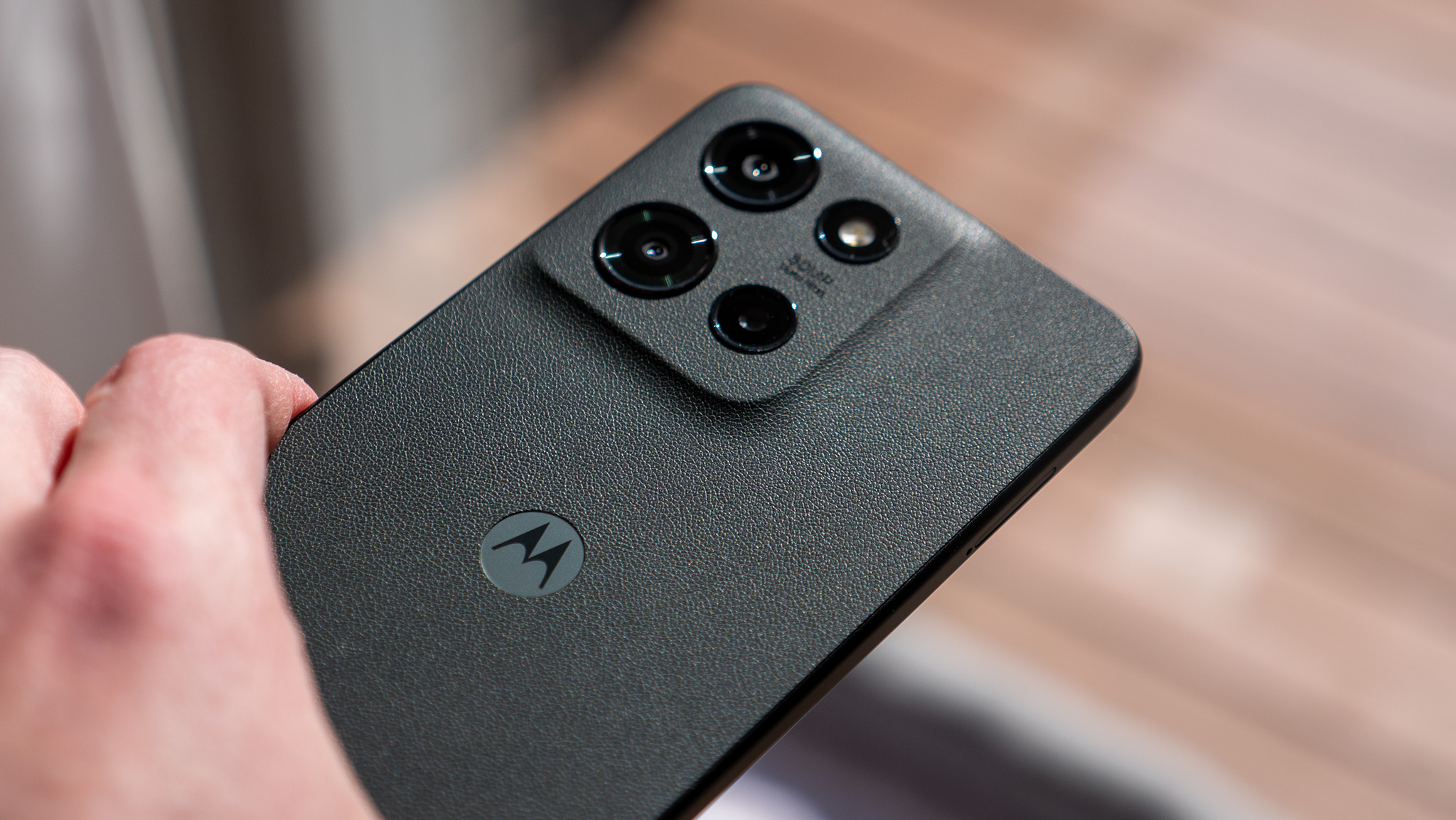Samsung Galaxy S23 Ultra camera review: More megapixels isn't always better
It feels like more of a lateral move than an upgrade.
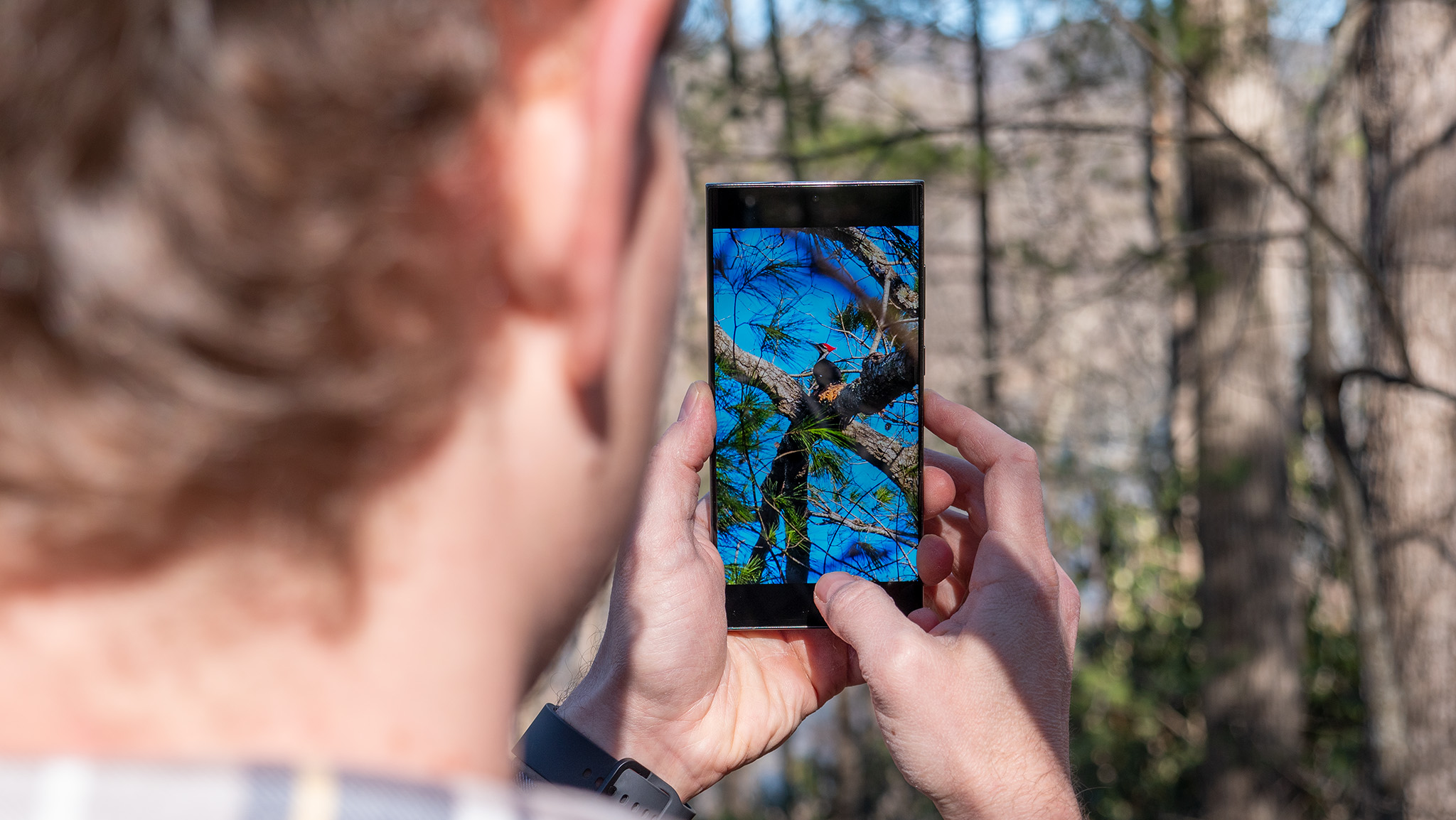
Every year, smartphone cameras claim to get better and better. Most years, this pans out and folks who upgrade — often from phones that are several years old — find that the camera quality from the latest device blows their old one out of the water.
Samsung is launching a brand new 200MP sensor with the Galaxy S23 Ultra, highlighting the desire of customers to get more and more detail out of their photos and videos. But a massive camera sensor isn't just good for extra detail, it's also good for pulling in more light, making photos look more natural and less processed.
So how does Samsung's latest stack up against the best Android phones available? I took the Galaxy S23 Ultra out alongside the Galaxy S22 Ultra, Google Pixel 7 Pro, and OnePlus 11 — three of the best cameras you can find on a phone today. Here's a detailed breakdown of every camera sensor and how it compares.
Main camera
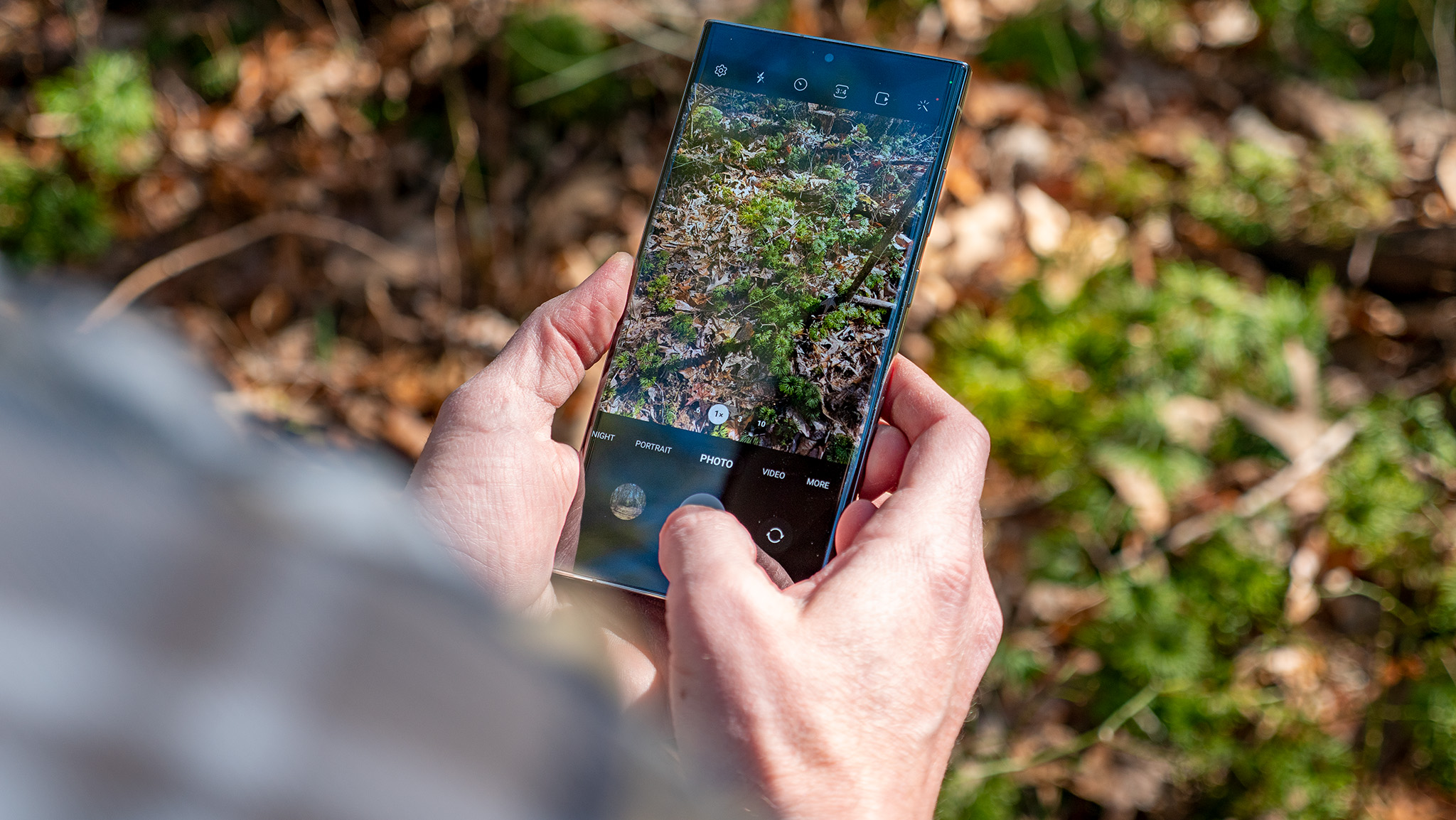
Let's begin with the headliner: the 200 MP main sensor on the back of the Galaxy S23 Ultra. This large sensor is capable of taking 200-megapixel full resolution photos but can also be used to take 50 MP and 12.5 MP photos. Each of these lower settings offers advantages and disadvantages.
The full 200 MP mode is obviously the most detailed of all, delivering over 200 million pixels of detail and holding up incredibly well in low light conditions, despite what full-resolution imagery from phone cameras often looks like. This is achieved by Samsung continuing to use multi-frame exposure even when the full resolution is selected.
In layman's terms, that means the phone takes between 2 and 8 images when you press the white shutter button. It then combines these images and intelligently improves the final image with all the extra visual information. See the difference for yourself:
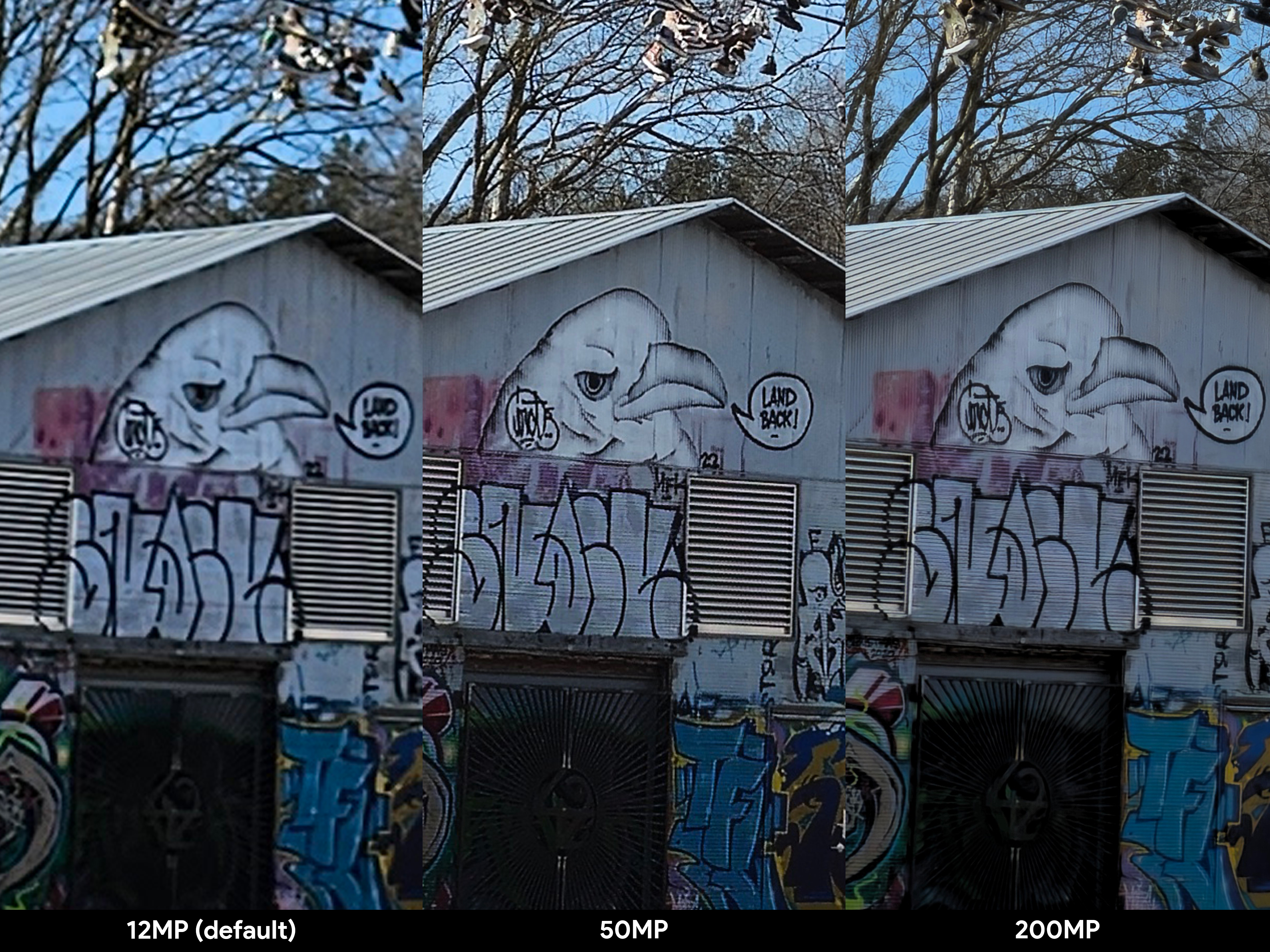
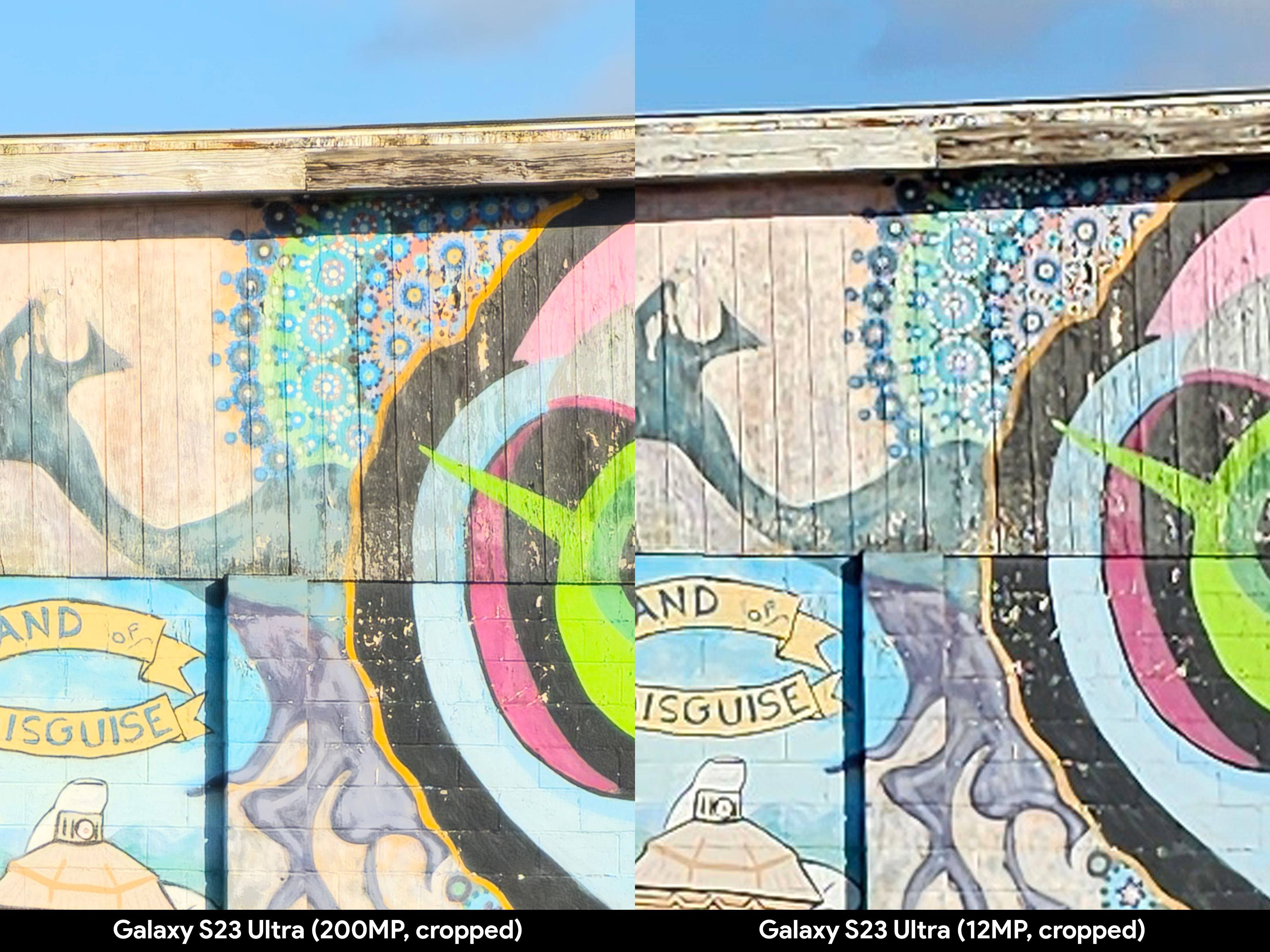
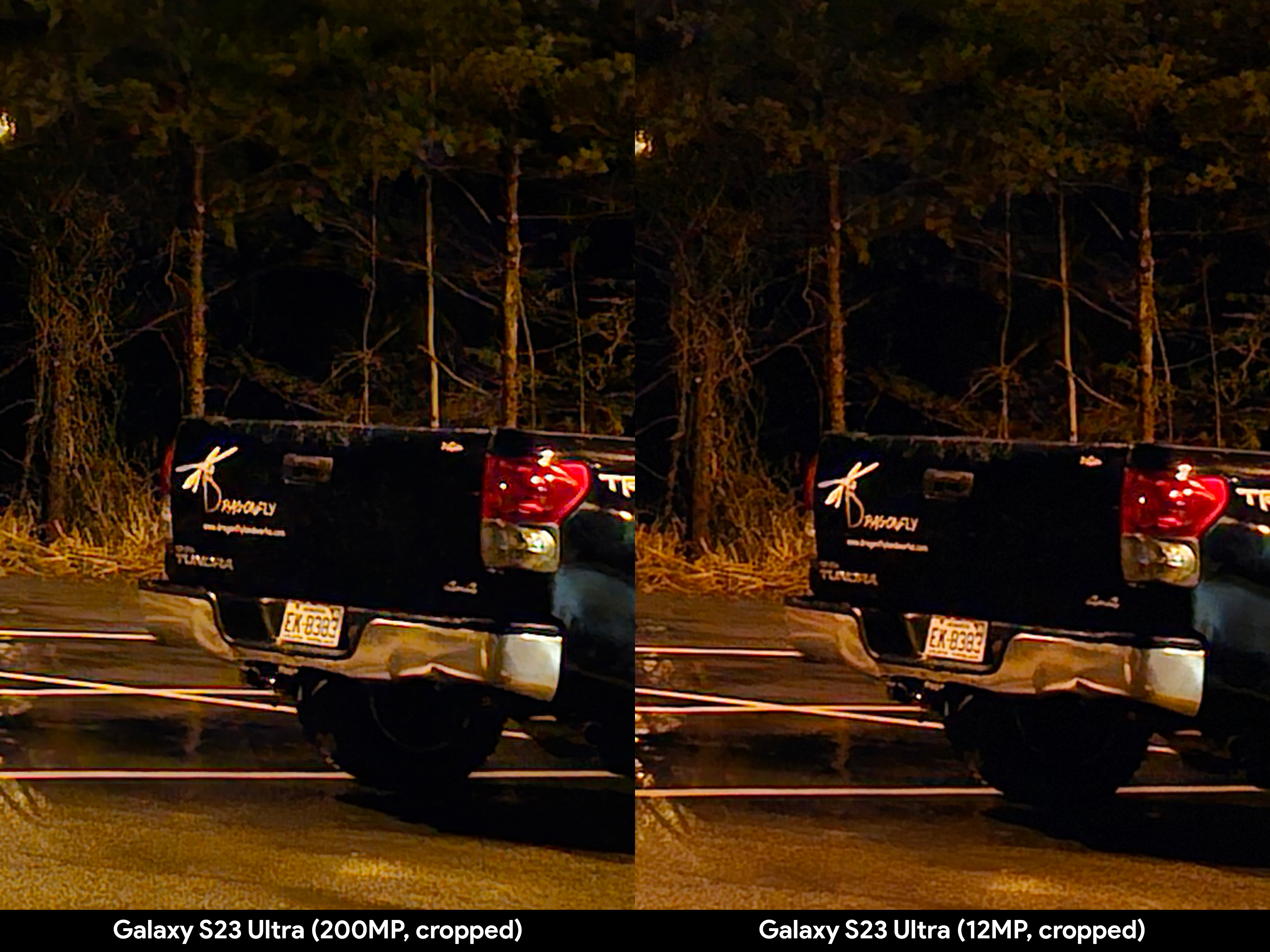
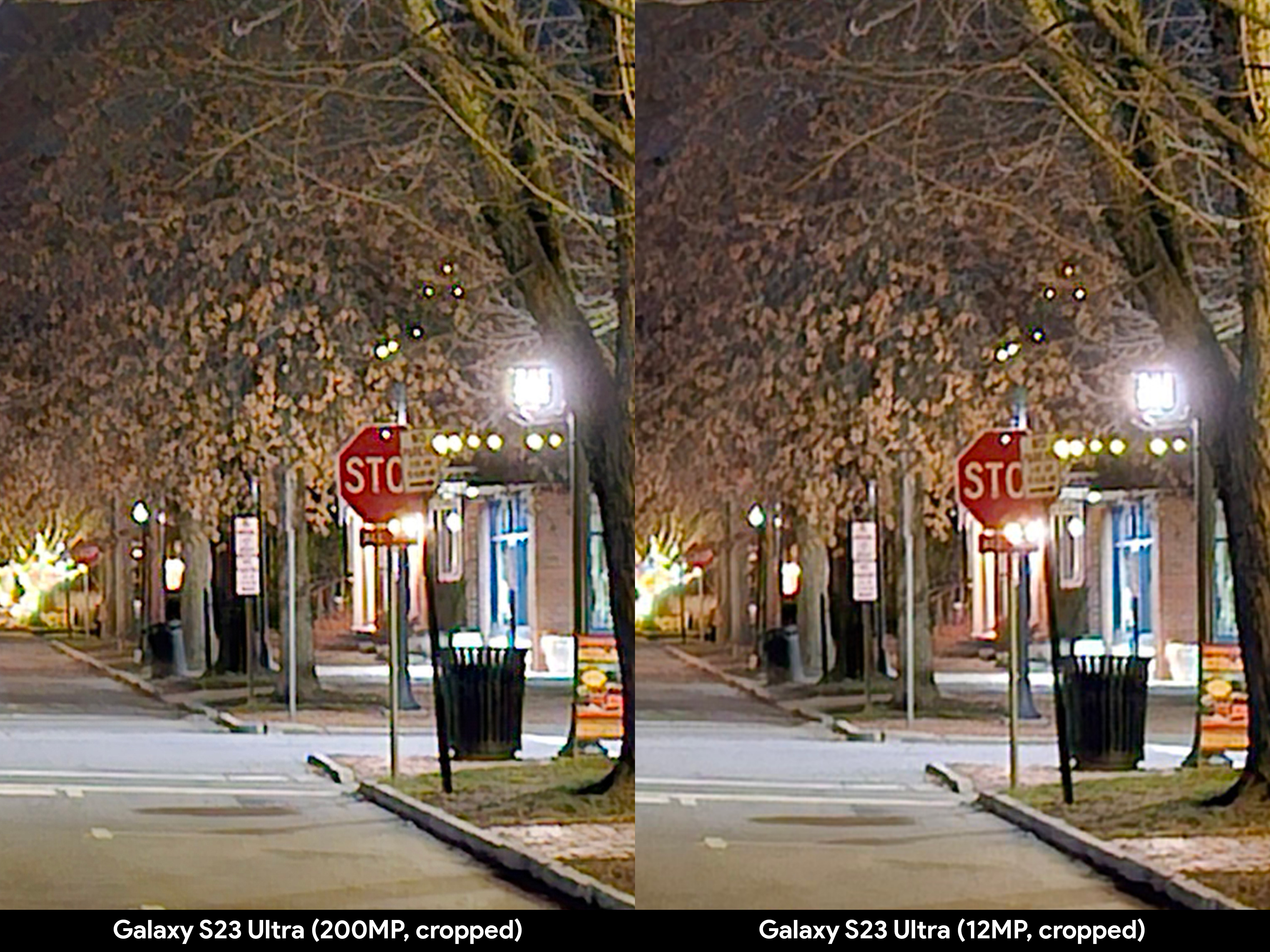
During the daytime shots above, you can see an exponential amount of detail increase. In the shot of the building with the crow graffiti, you can count the individual metal spokes of the door below on the 200 MP image while you have to really squint to be able to see it. Likewise, in the second image, you can clearly see the wood grain, brick structure, and other impressive fine details on the 200 MP image while it's difficult or impossible to see them on the 12.5 MP one.
Be an expert in 5 minutes
Get the latest news from Android Central, your trusted companion in the world of Android
In lower light, the difference drops to essentially nothing between the two modes. That's actually extremely impressive given that other phones that offer a full-resolution mode typically produce substantially worse imagery in low light when using the full resolution. There are no negatives to using the 200 MP mode, not even in low light. You'll only gain detail by tapping that 4:3 button at the top and selecting 200 MP mode.
There are no negatives to using the 200 MP mode, not even in low light. You'll only gain detail and that's an incredibly impressive feat by Samsung.
The detail that comes from this sensor is nothing short of astounding. Surprisingly, dynamic range and other qualities aren't negatively affected by the resolution change, and that's all because of Samsung's multi-frame exposure algorithm. It's gotten really smart and Qualcomm's Snapdragon 8 Gen 2 processor is actually fast enough to capture several 200 MP photos and combine them in just a few seconds in the background.
Also surprising is the fact that shutter speed and overall camera app performance aren't affected too much by this change. In a 5-second window, I can take 6-7 photos in the 12.5 MP mode while I can take about 3-4 with the full 200 MP resolution selected. It's slower to capture but not terribly slow, and you don't need to hold the phone still to wait for a capture like you would need to during a nighttime shot.
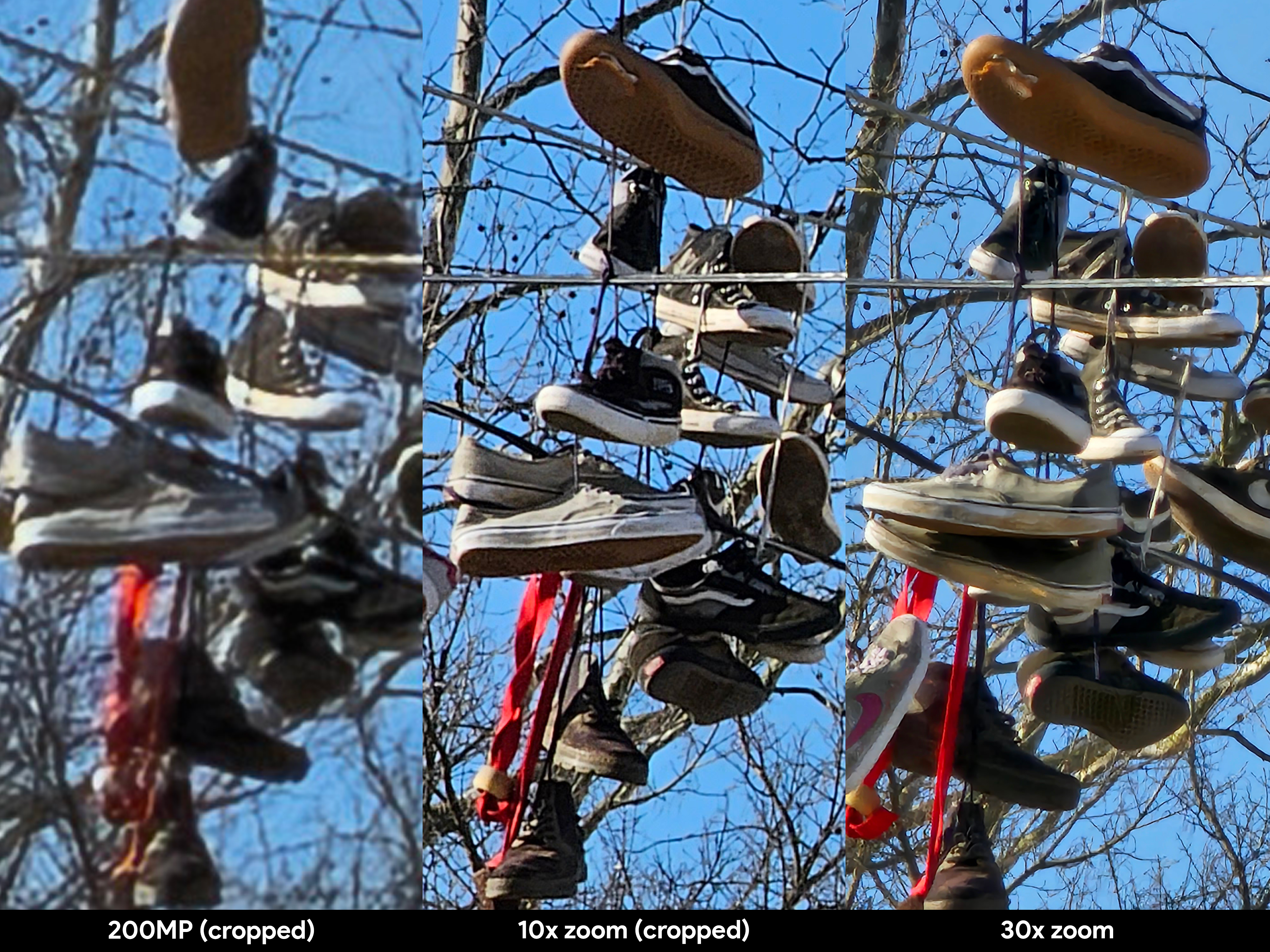
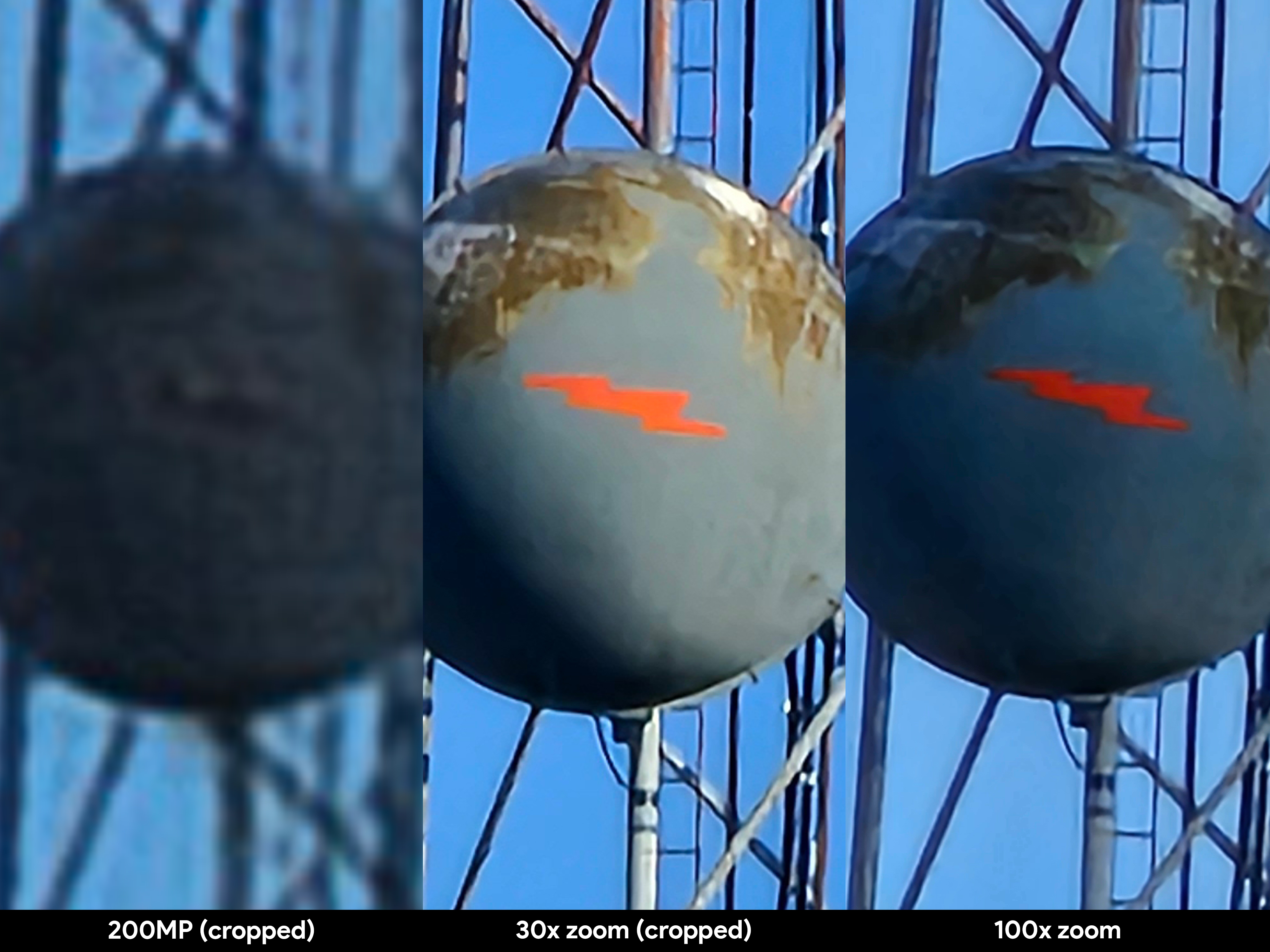
But here's the thing: 200 MP photos are not a proper replacement for good telephoto cameras. In the two examples above, I snapped a 200 MP shot followed by a 10x and 30x shot in the viewfinder. The results above show what a standard zoomed shot looks like compared with cropping a full 200 MP image.
As good as it is, 200 MP photos are not a proper replacement for good telephoto cameras.
Each image was cropped according to the furthest zoom I used in the viewfinder. This is similar to pinching and zooming on an image after you took it.
In every case, you'll find that, while the 200 MP shot is substantially more detailed than the default 12.5 MP shot, you should always use the zoom function any time you're actually trying to focus on a particular subject that's far away.
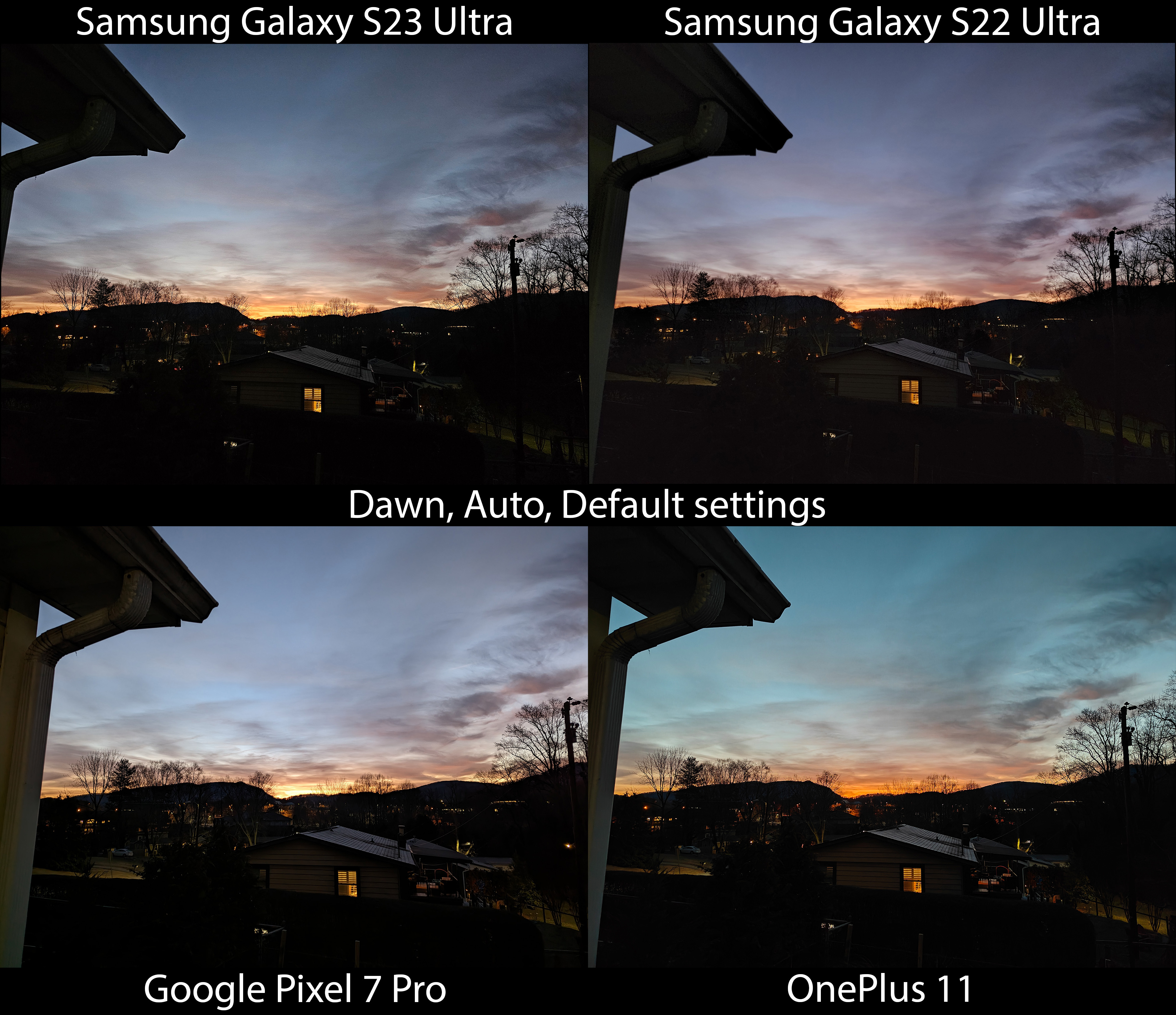
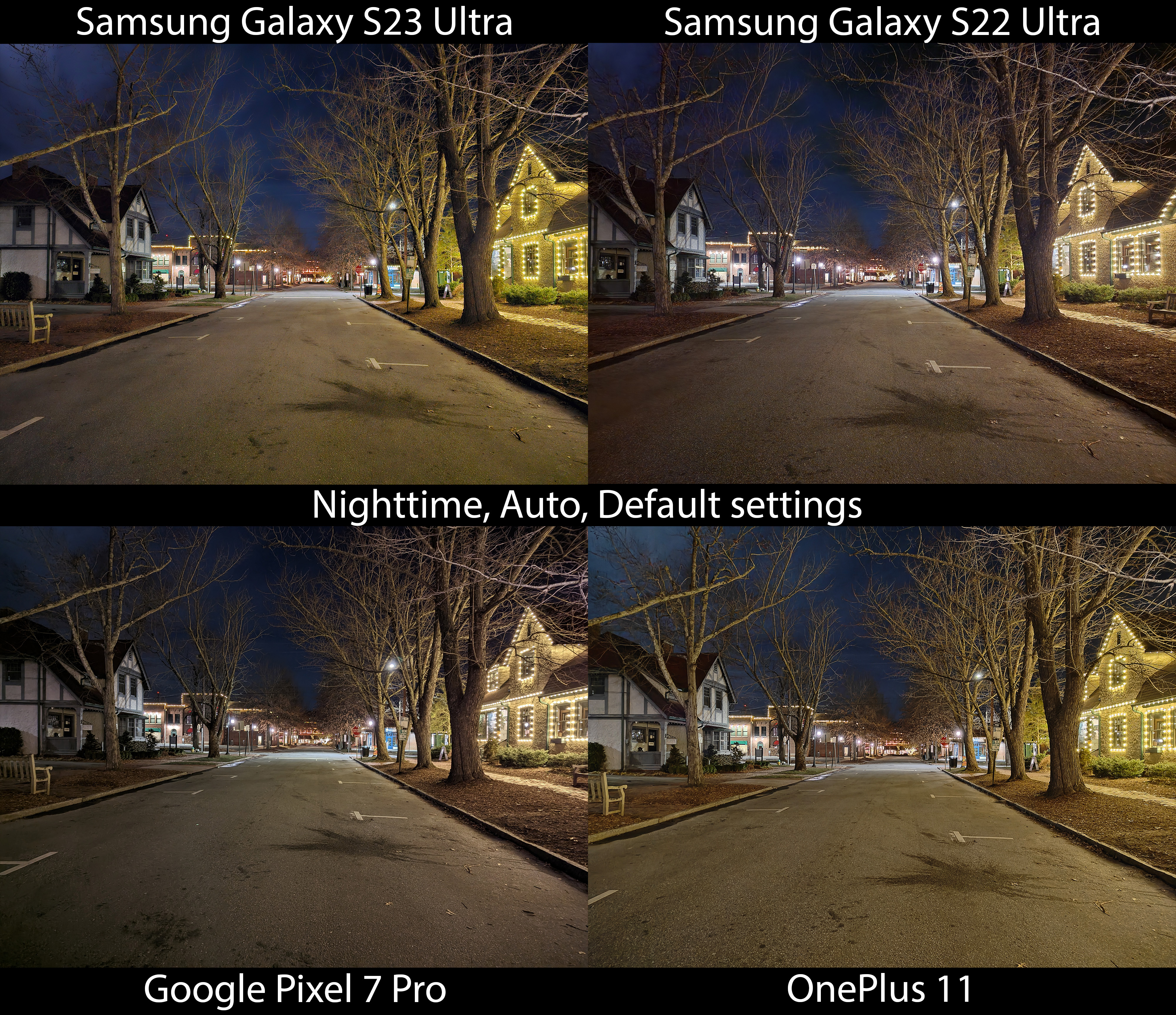
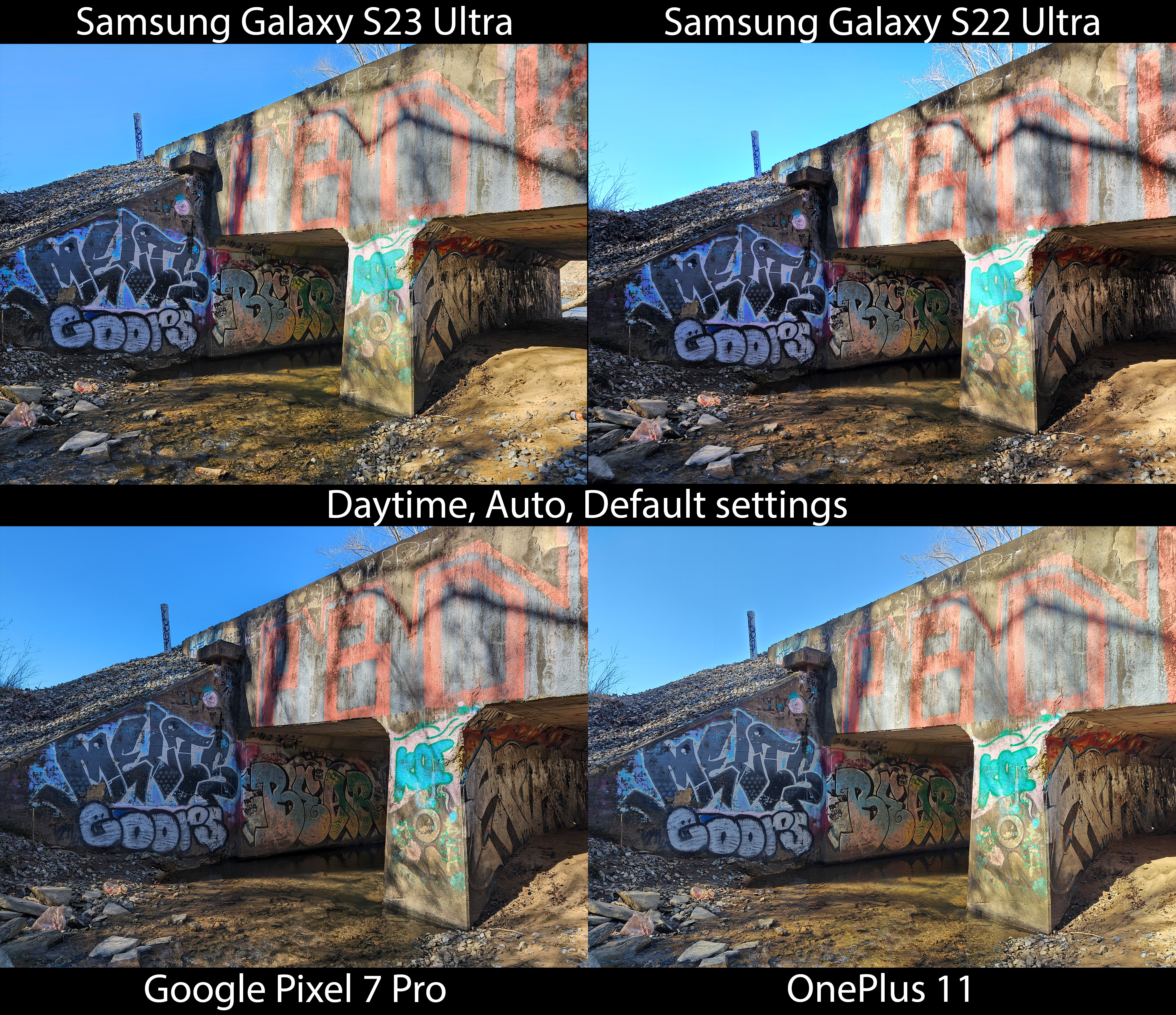
At this point, most premium smartphone cameras are so good it's almost not worth comparing them anymore. If you spend this much money on a camera and just point and shoot, you're going to be happy with the image almost every time. Above are several examples of the general quality you should expect at different times of the day.
In the night-time shot, the OnePlus 11 and Galaxy S23 Ultra are actually more color-accurate to what the scene looked like in real life, despite both being extremely yellow. Both the S22 Ultra and Pixel 7 Pro adjusted the scene to have a better white balance but that's not technically correct, despite looking more attractive. Samsung's HDR method also seems to cause some odd hallowing around the trees at the top of the image while the other two phones don't have this issue.
At dawn, Samsung's new 200 MP sensor seems to do an excellent job of capturing the scene as it seemed to the eye. The sky was turning bright but the landscape was still dark and that's what we're seeing here. Both the OnePlus 11 and S22 Ultra tried to brighten the landscape too much and end up looking grainy.
Oddly enough, I found the Galaxy S23 Ultra's main sensor struggles most during the day and with indoor lighting. On several occasions, I found that the S23 Ultra overexposed the image for no apparent reason or got the white balance wrong when other phones wouldn't struggle with these issues; not even the S22 Ultra before it.



The main sensor on the S23 Ultra has serious consistency issues with exposure, regularly overexposing shots for no good reason.
Our own Tshaka Armstrong took the Galaxy S23 Ultra to the stage of Good Day LA and the results were wildly inconsistent, to say the least. The first image blew out the birthday cake completely, turning the baby blue facade into a frosty white cake. I had this happen several times in my testing but this was one of the best examples I've yet seen of how inconsistent the S23 Ultra is right now.
Note that this is in a production TV studio with good, consistent lighting. There's no reason the phone should have had these difficulties.
Likewise, the S23 Ultra still has trouble capturing motion, just as most smartphones do. I provided a detailed breakdown of this issue if you'd like to read all about it, but I think this one image speaks volumes for parents looking to capture their little ones without being blurry.
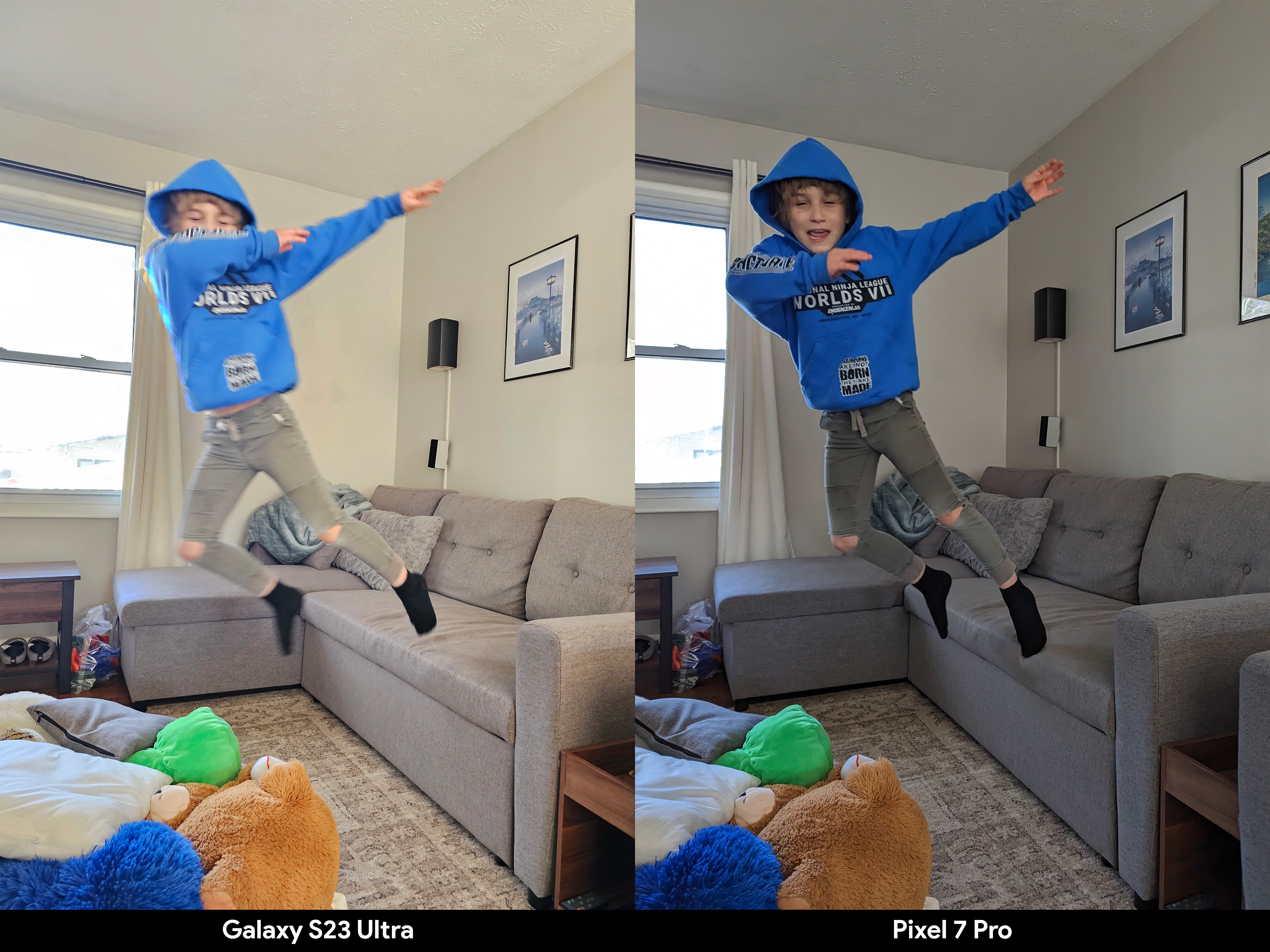
In every shot I took in this test, the S23 Ultra and S22 Ultra both overexposed the shot and had a very difficult time capturing movement, as a result. The final image isn't attractive at all and doesn't look like it came from a $1,200 phone in 2023. Samsung really needs to iron out these issues, because the rest of the results from the main sensor are phenomenal.
Telephoto cameras
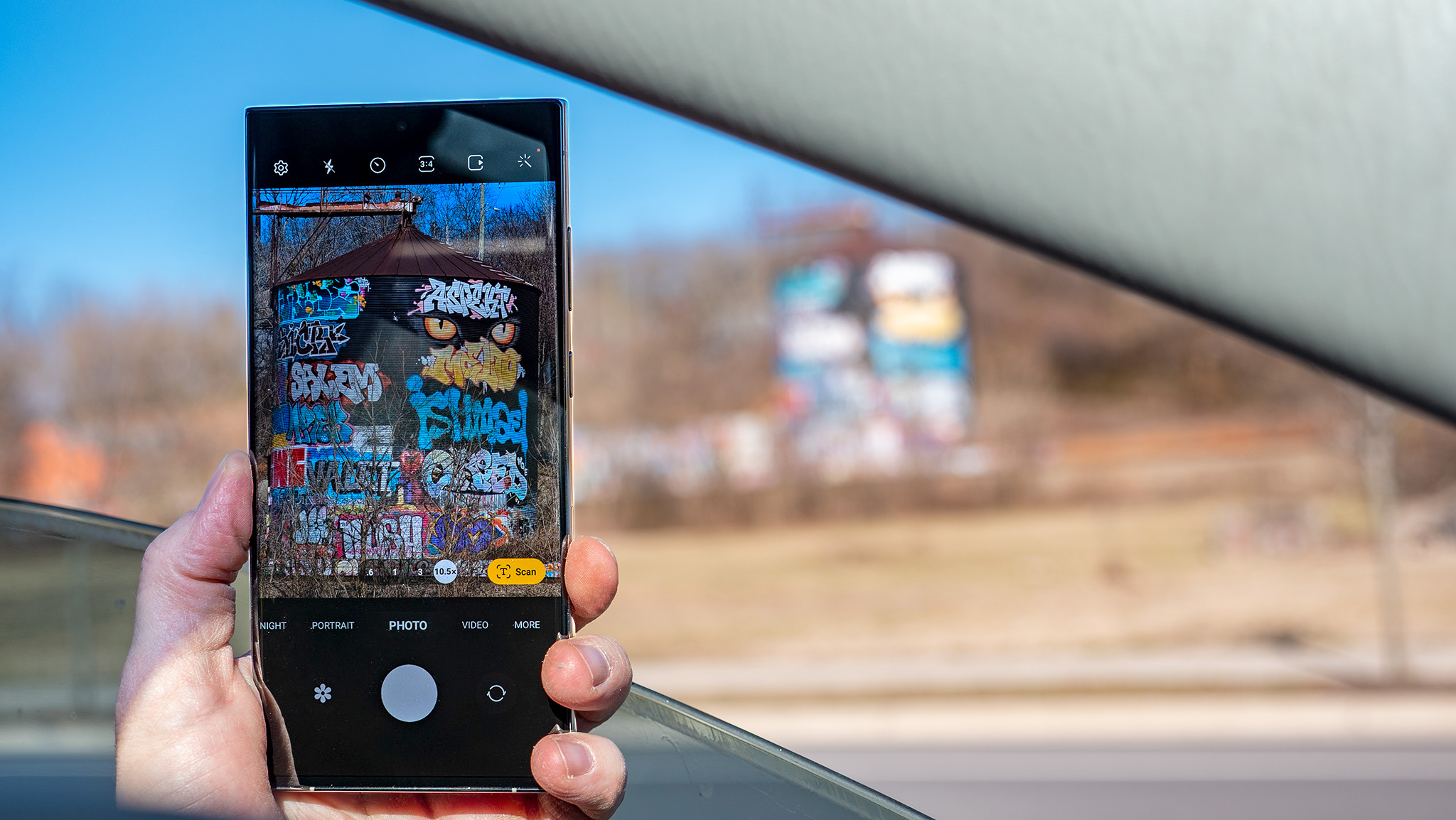
More than likely, if you're considering a Galaxy S23 Ultra, you're doing so because you've heard about the phone's incredible ability to zoom up to 100x and still capture a usable image. True to form, the Galaxy S23 Ultra excels at zooming in a way that only the Galaxy S22 Ultra or Pixel 7 Pro can rival.
If you've never had a phone that can zoom like this, you might be wondering if you really need this kind of functionality. As with a lot of things, you don't realize how much you'll actually use it until your phone can do it.
If you're looking for a phone that can capture a good image even when you have to zoom way in, you're not going to find better ones than what I've tested here.
This is a phone that can capture a good image even when you have to zoom way in. Most of the time, at least.
Largely, the S23 Ultra doesn't differ much from the S22 Ultra when it comes to zooming in. Sure, the main sensor has nearly double the number of pixels as the S22 Ultra's main sensor but it doesn't seem to affect the quality of a zoomed photo. While this might not make sense on the surface, it's actually a bit surprising to see in action.
In short, Samsung utilizes multiple sensors to capture an image when you zoom in. Theoretically, a sensor upgrade on any lens should improve the final image substantially but it doesn't appear to do so. As a result, zoom detail is largely identical between the S22 Ultra and S23 Ultra.
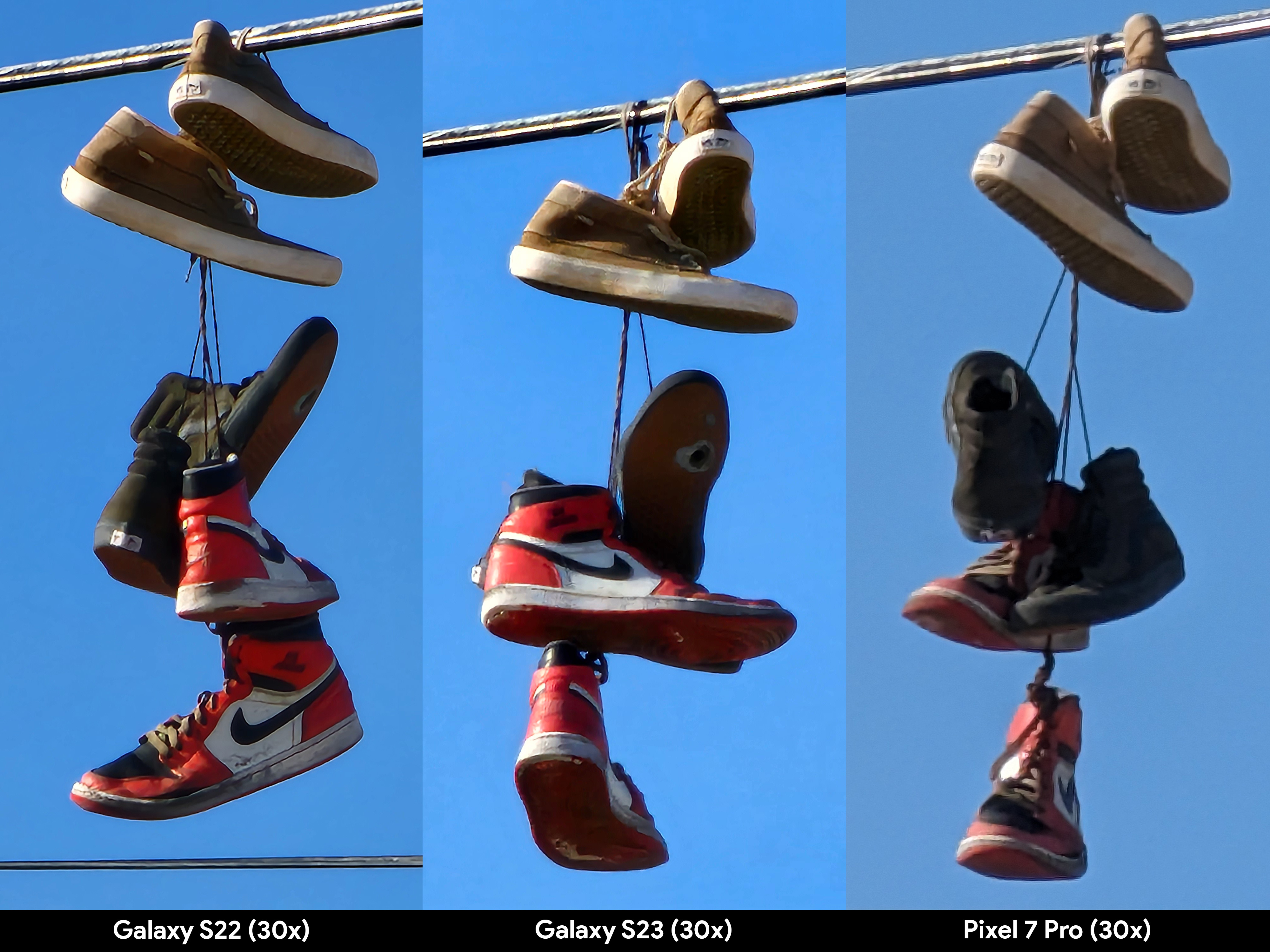
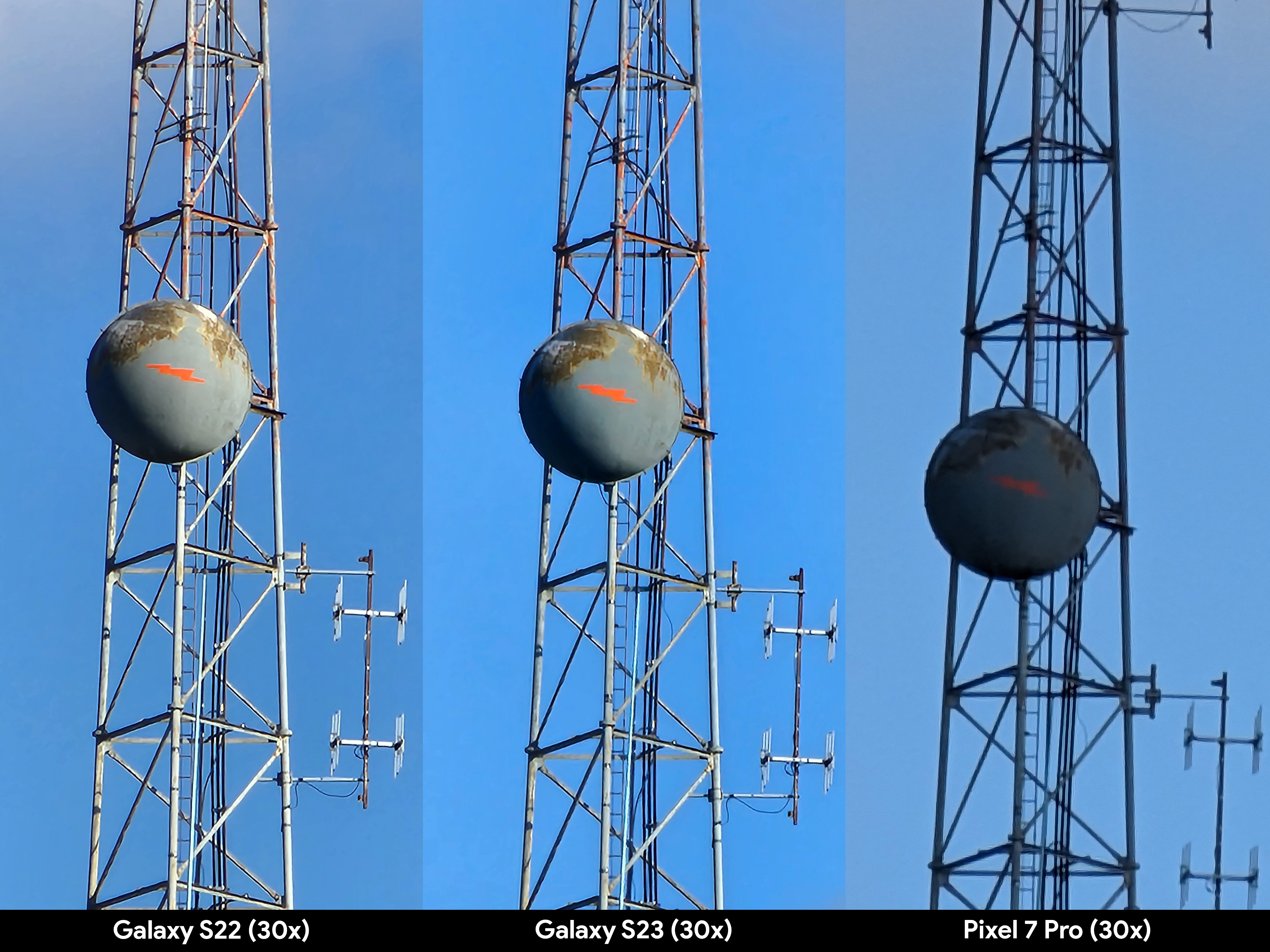
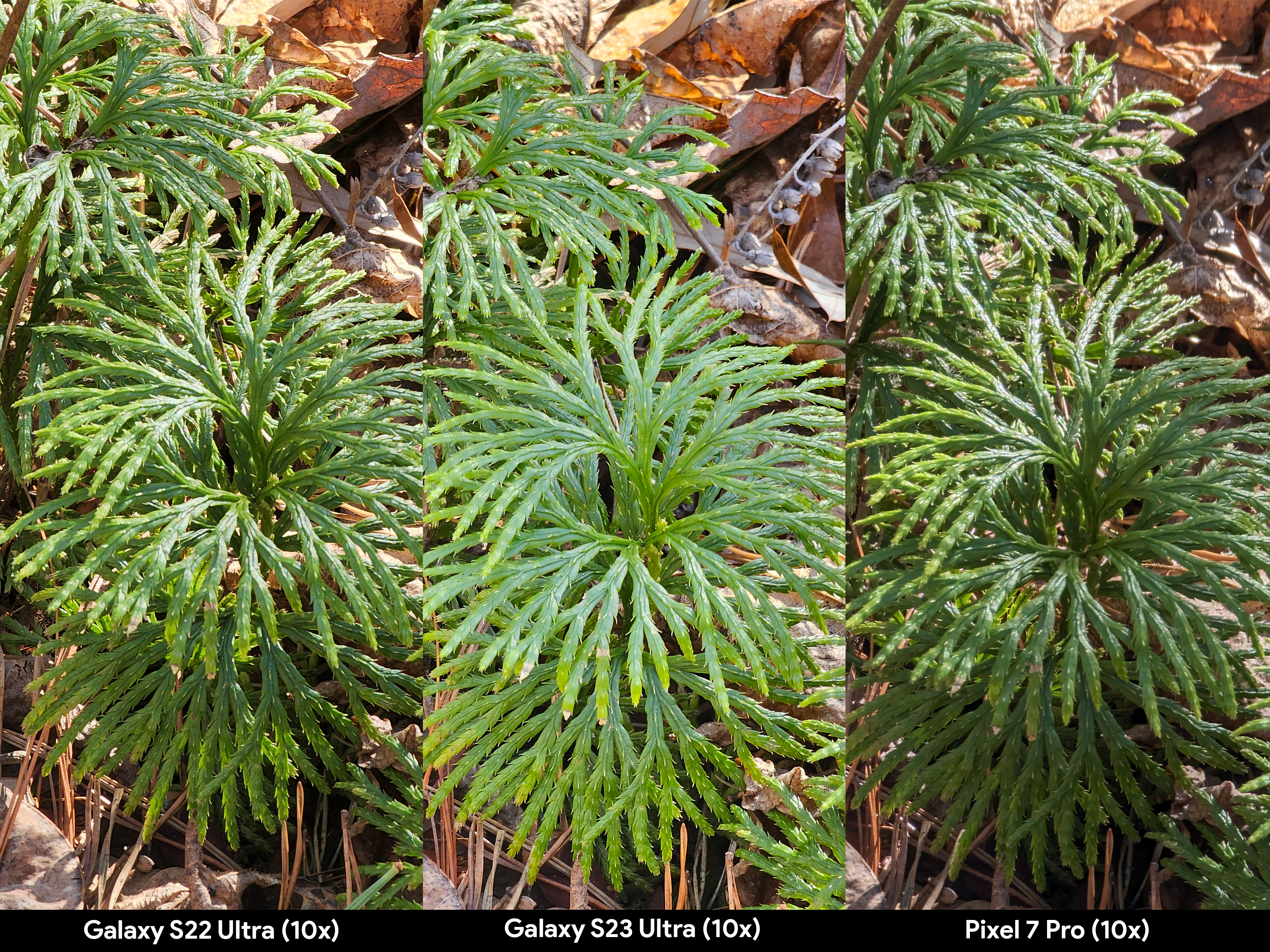
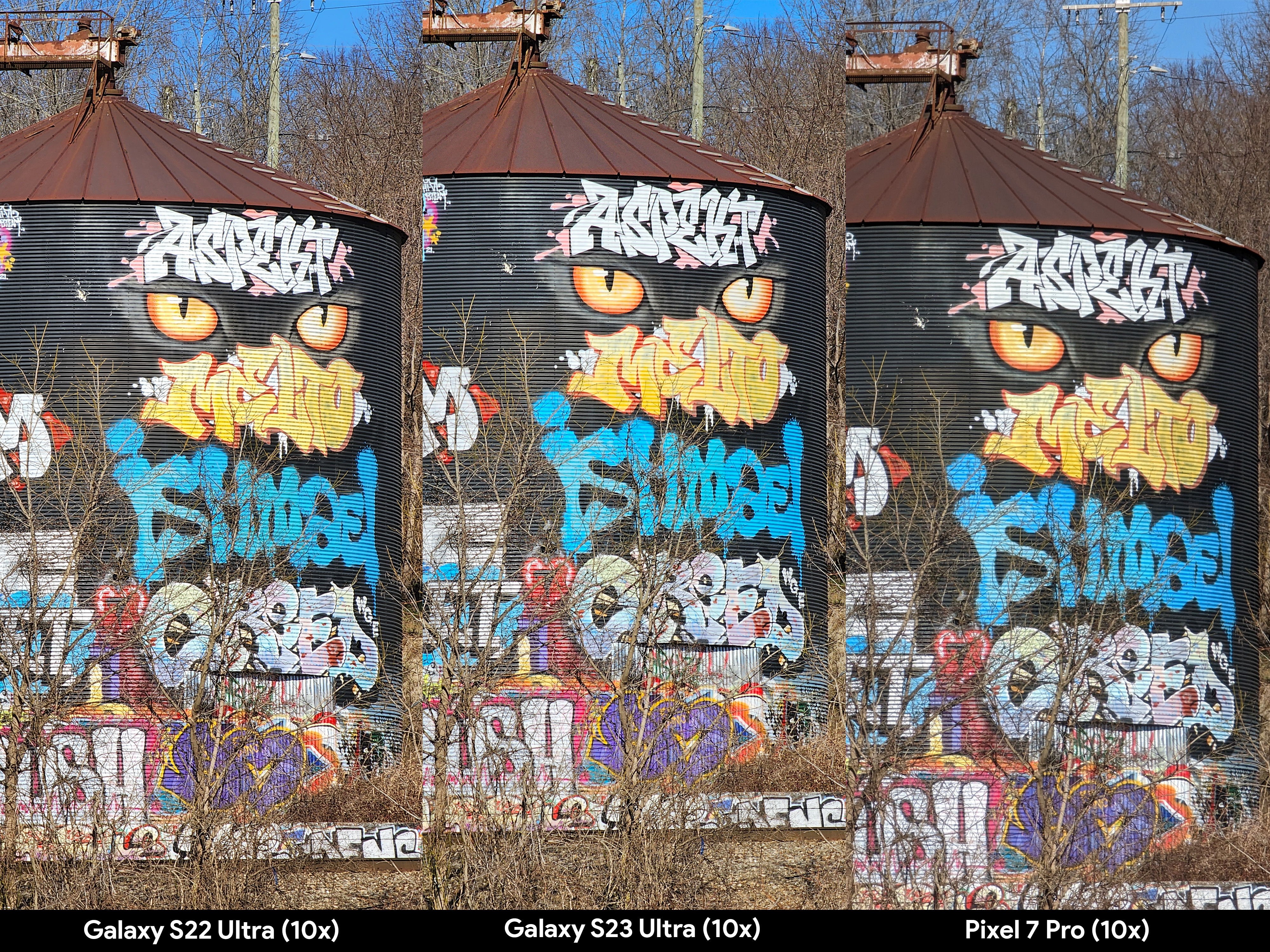
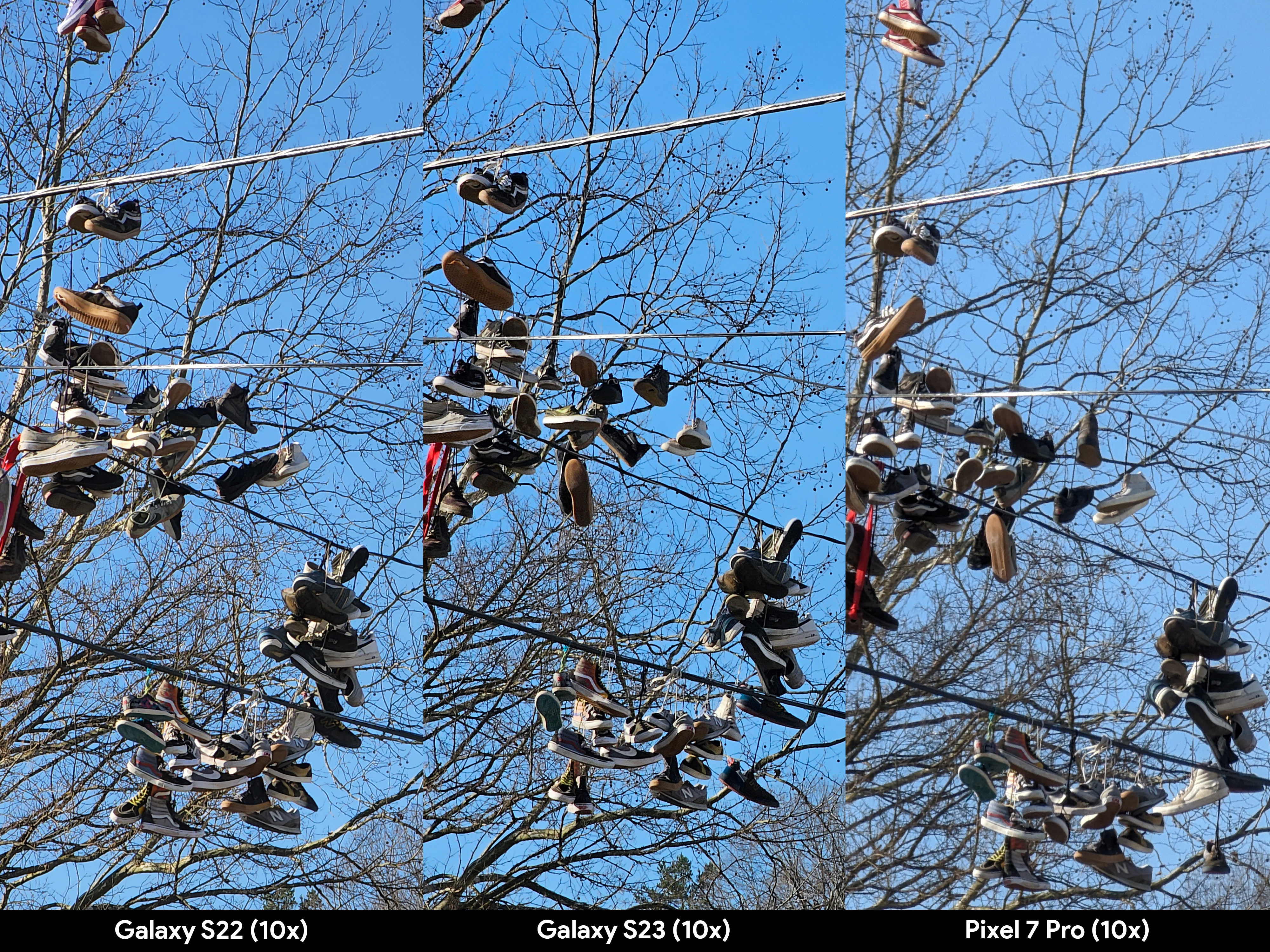
At 10x zoom, the differences between the Galaxy S22 Ultra, S23 Ultra, and Pixel 7 Pro are negligible. In one case, the S23 Ultra overexposed the image while the other two didn't — something that's consistent with the main sensor results above — but the rest of the shots are pretty even across the board.
The best word to describe the Galaxy S23 Ultra's zoom performance is "inconsistent."
During the day, the Pixel 7 Pro's zoom detail between 5x and 10x is better than what Samsung offers. Once you go beyond 10x, however, the tides change substantially. Samsung's zoom detail beyond 10x is excellent, even if the S23 Ultra has inconsistent exposure between shots. Sometimes it has better exposure than the S22 Ultra and sometimes it's worse. There seems to be no rhyme or reason for this difference.
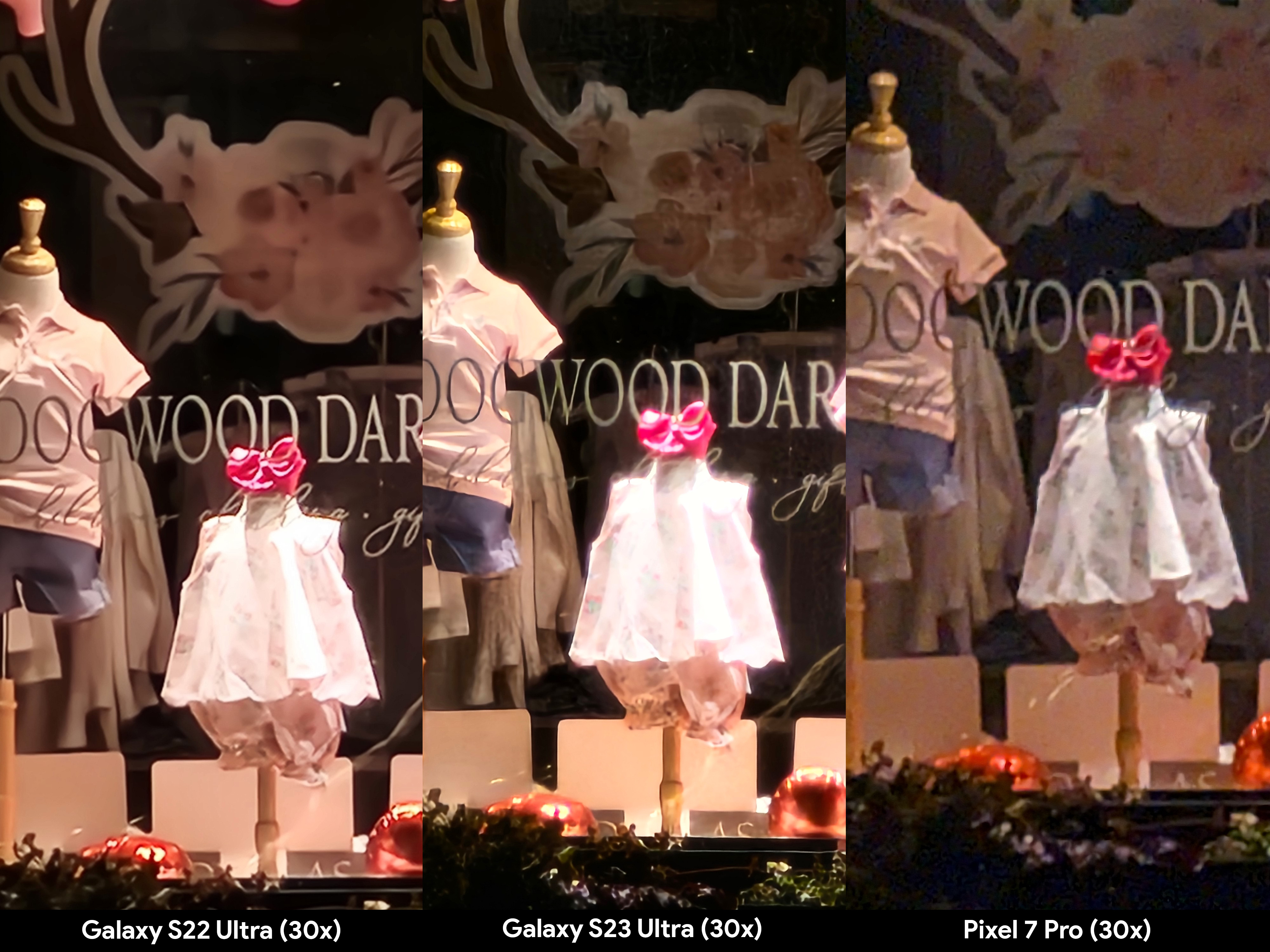
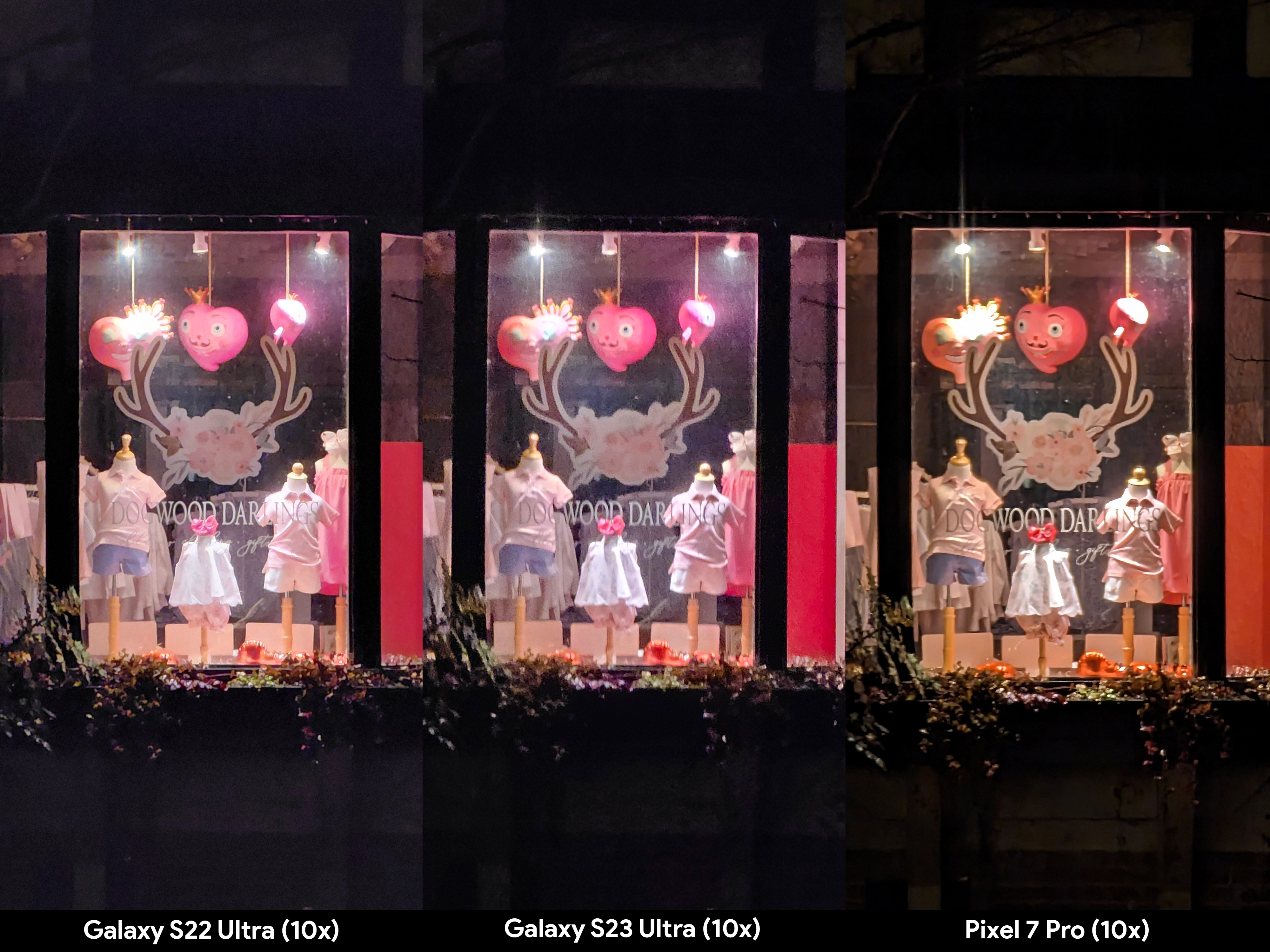
At night, the best word to describe the Galaxy S23 Ultra's zoom performance is "inconsistent." The two examples above show this in action. It's the same scene at the same time of day utilizing the same camera module — that's the 10x optical lens — yet, the results are different.
In the 10x shot, the Pixel 7 Pro wins out pretty handily. Overall exposure is better, the image is cleaner and clearer, and the colors don't look washed out as they do on the S22 or S23 Ultra.
At 30x, the S23 Ultra takes a huge nosedive in quality, overexposing the image as we've seen in several previous examples. Even the S22 Ultra did it better, begging the question: why?
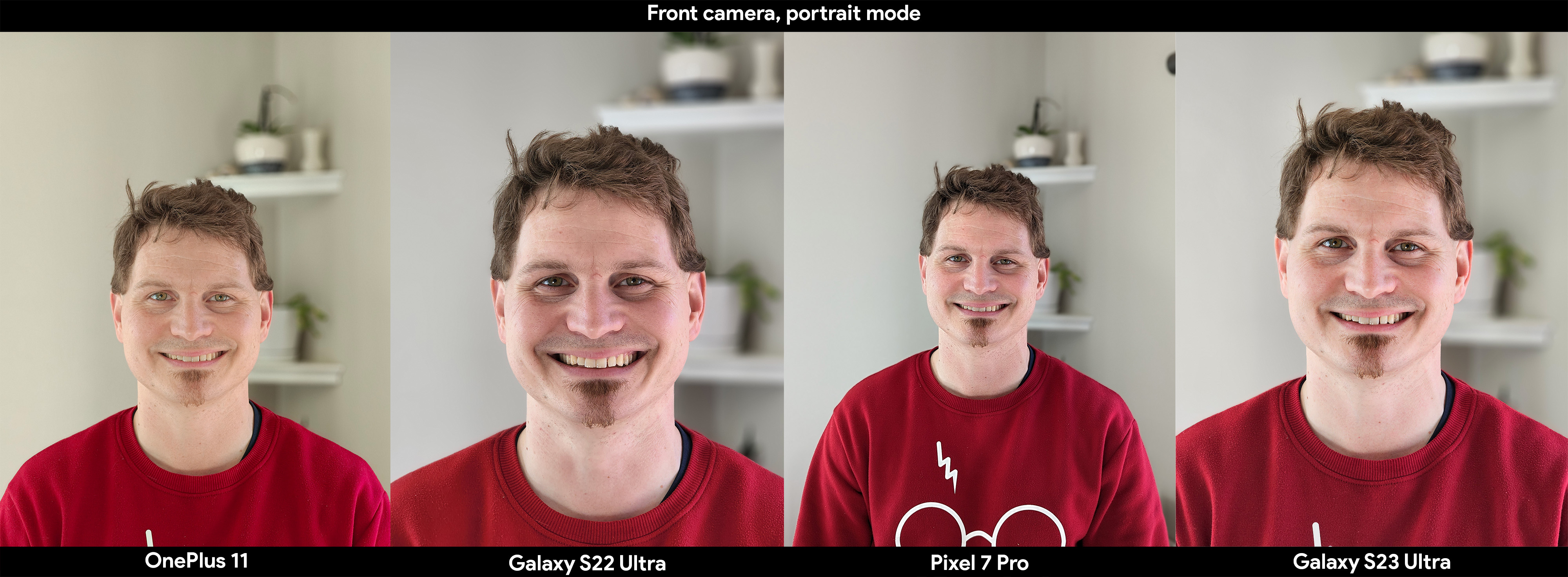
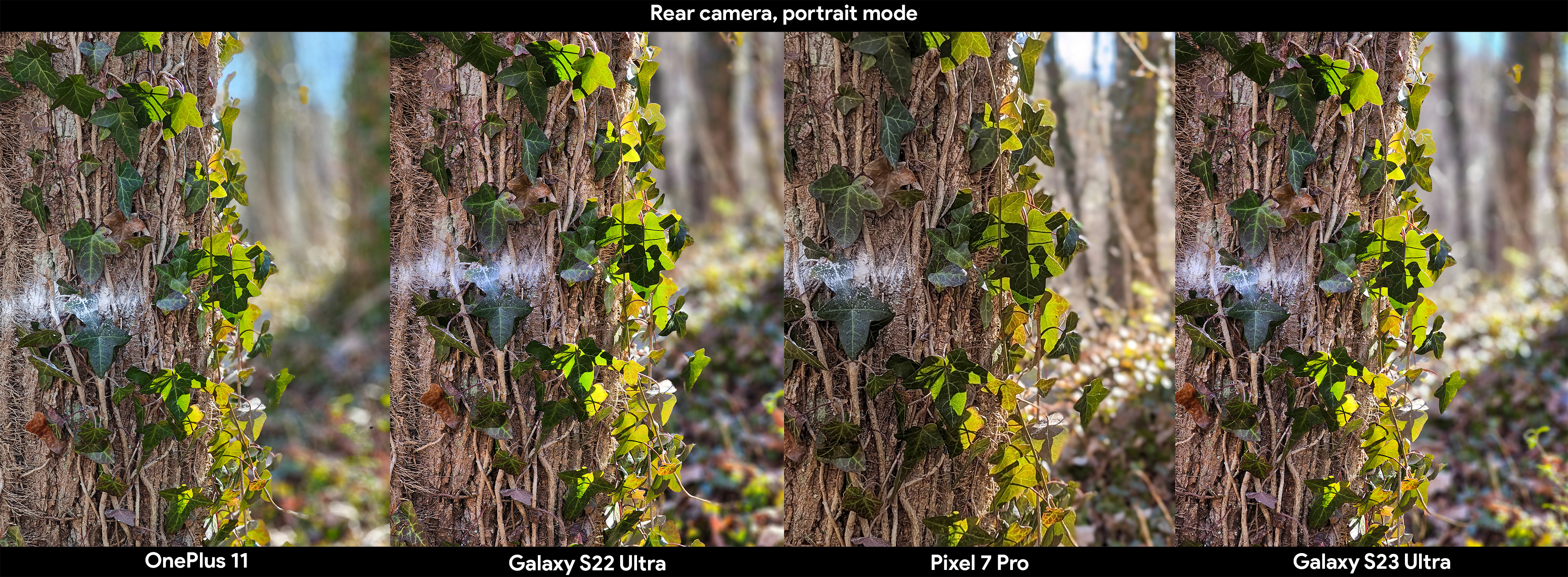
Samsung's portrait mode is best.
Lastly, we're taking a look at portrait mode with the default camera chosen. When switching to portrait mode, each of these four phones — The S23 Ultra, S22 Ultra, OnePlus 11, and Pixel 7 Pro — default to a different lens. Both Galaxy phones use the 3x lens, the OnePlus 11 uses the dedicated 2x portrait lens, and the Pixel 7 Pro uses the main sensor at 1x.
The result is a very different effect for the overall photo because of the zoom level/cropping that takes place. You can always zoom in or out with any of these phones but the default lens choice is the one best optimized for the portrait mode experience.
In the second shot, I zoomed in/out in an attempt to capture the same image on all phones. I also used a difficult subject; a tree with English Ivy crawling up the trunk. Once again, Samsung's portrait mode is best here, with OnePlus's coming in a very close second. Google's portrait mode just isn't as good these days, as the photo is less crisp, has worse dynamic range, and more edges of the Ivy leaves are erroneously blurred.
Ultra-wide/macro camera
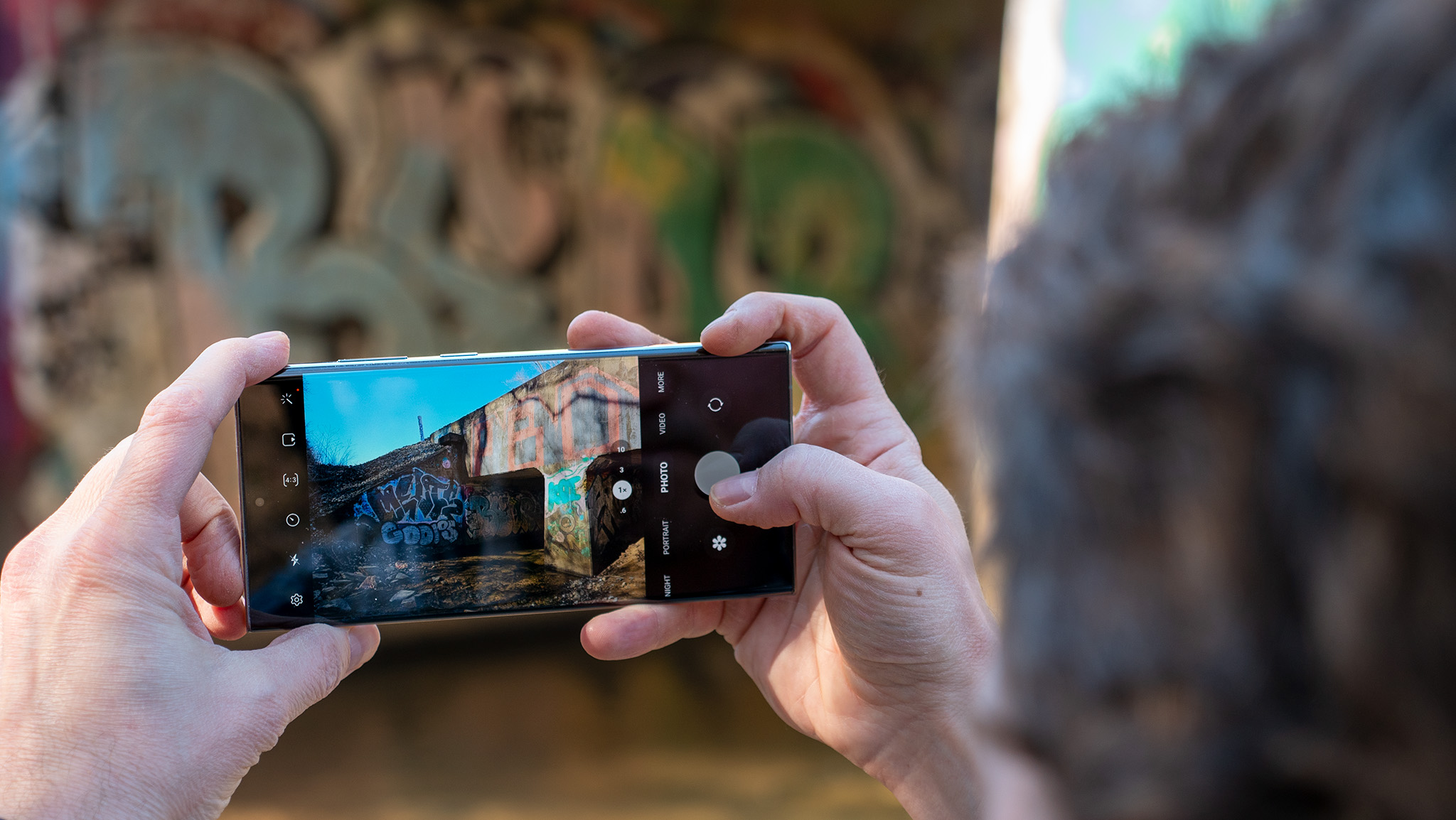
Ultra-wide cameras have become a staple on smartphones ever since LG proved to us they were a necessity so many years ago. But ultra-wide cameras haven't seen a huge shift in quality in a while, typically focusing (pun intended) on features like autofocus and macro modes.
The ultra-wide angle camera in the Galaxy S23 Ultra is identical to what's in the Galaxy S22 Ultra based on what Samsung told us, but that doesn't mean we don't see an improvement year-over-year in some areas (while other areas are, strangely, worse).
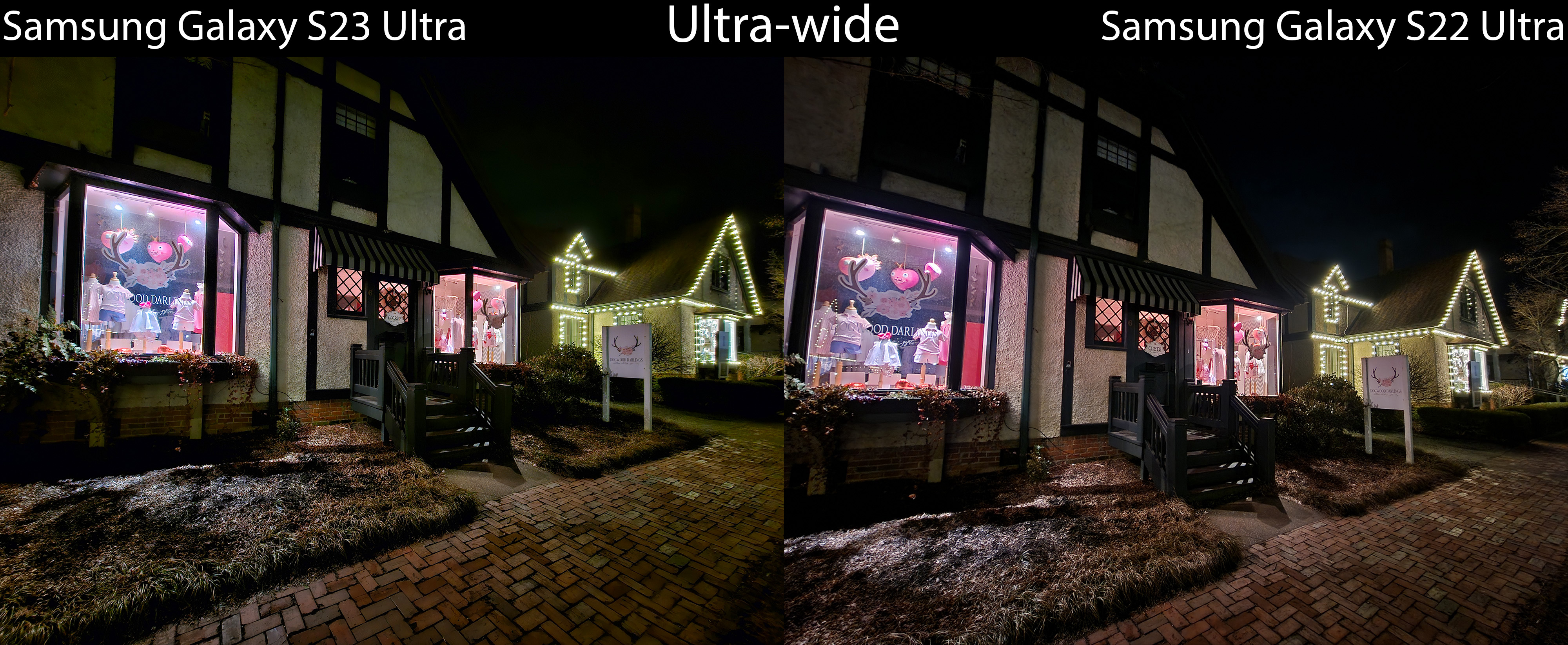
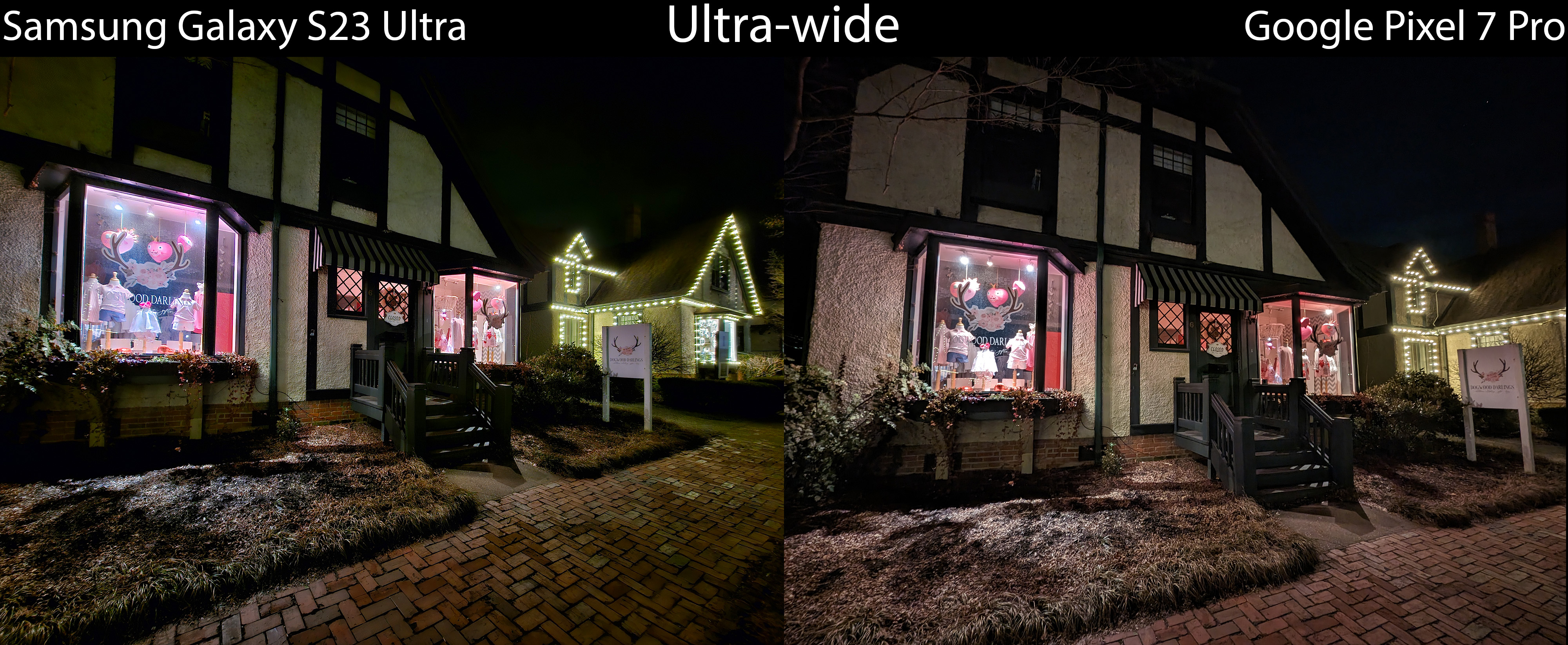
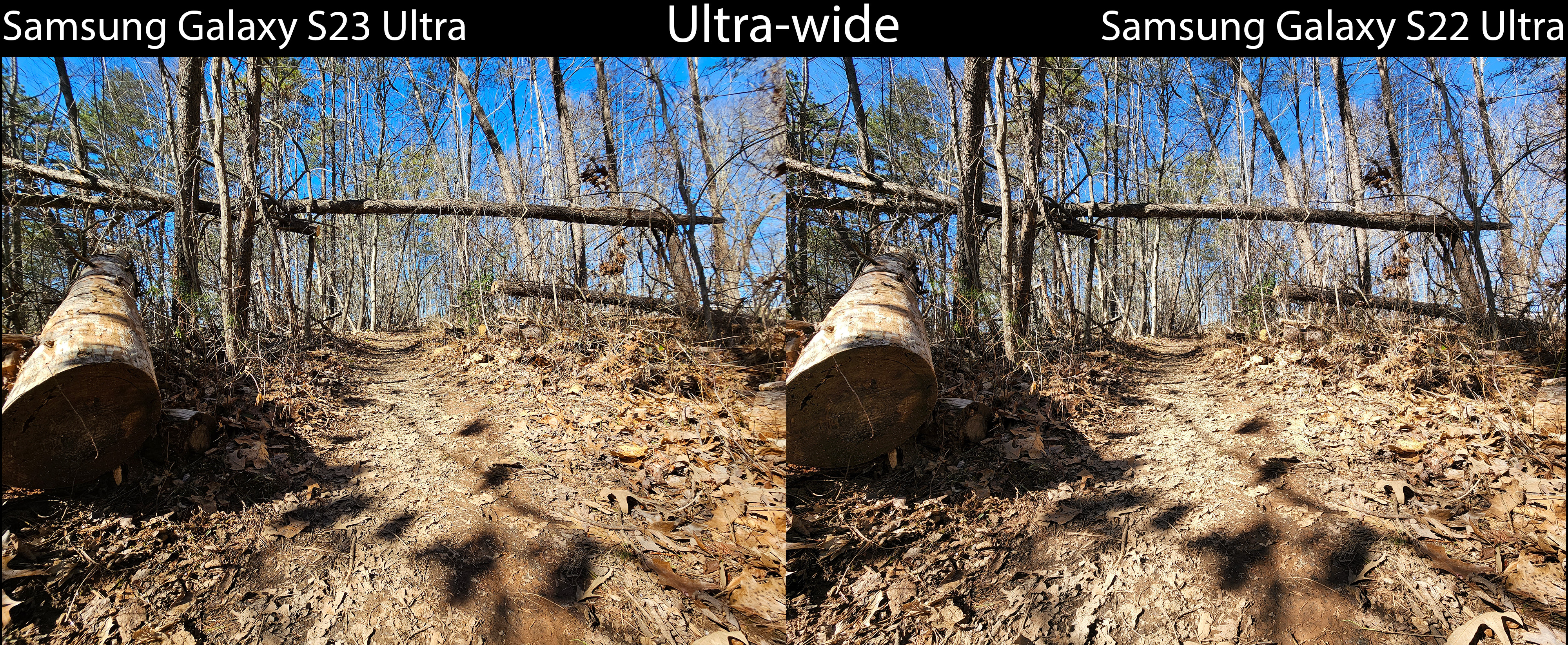

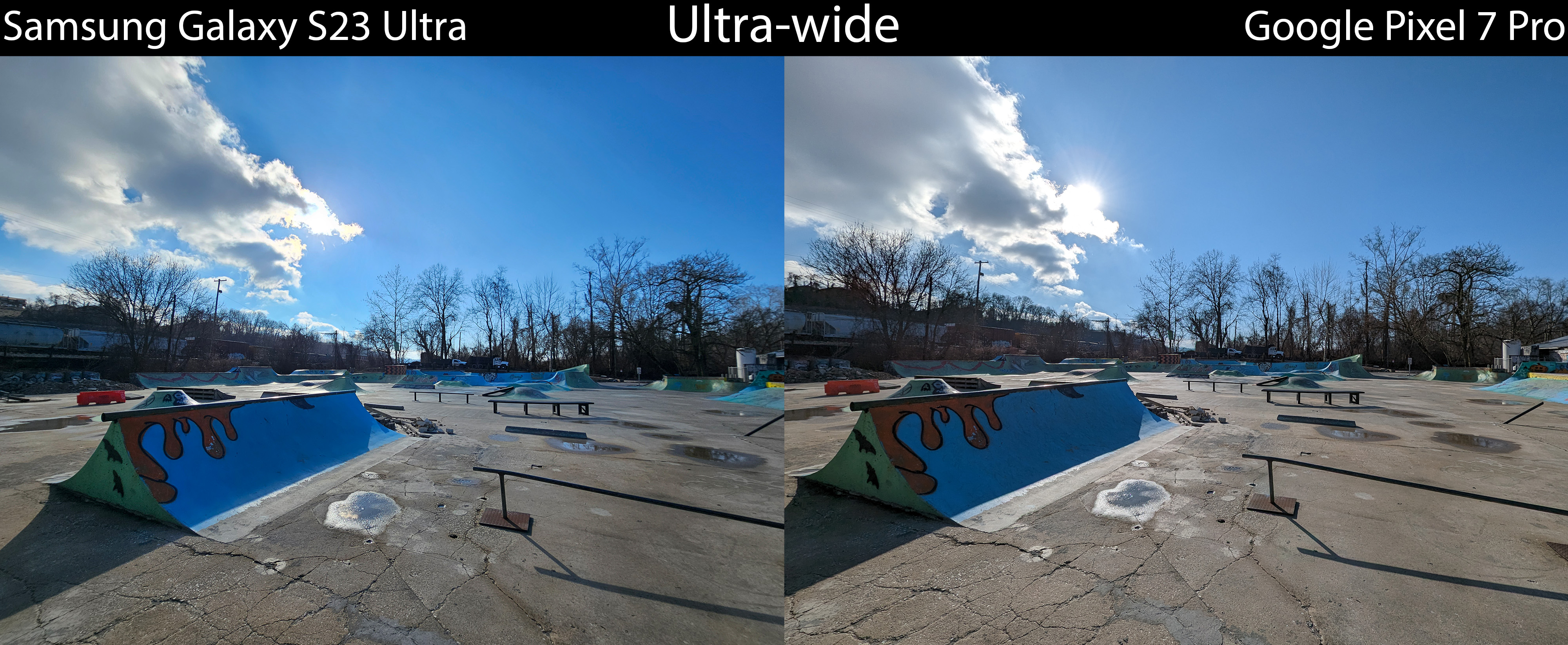
Low light performance of the macro camera seems to be worse on the S23 Ultra than the S22 Ultra.
Low light performance of the macro camera seems to be worse on the S23 Ultra than the S22 Ultra, in my testing. While the sensor and lens are identical between the phones, the Image Signal Processor (ISP) — a component in the Snapdragon SoC onboard — is different between the two phones. In other words, what you're seeing is largely a software-level tweak that Samsung could adjust in the future.
During the day, the ultra-wide camera has a slight green tint to it and doesn't seem to have a narrower dynamic range than the S22 Ultra and Pixel 7 Pro. Overall, the ultra-wide camera on the Galaxy S23 Ultra seems to produce worse results than the one on the S22 Ultra and the Pixel 7 Pro.
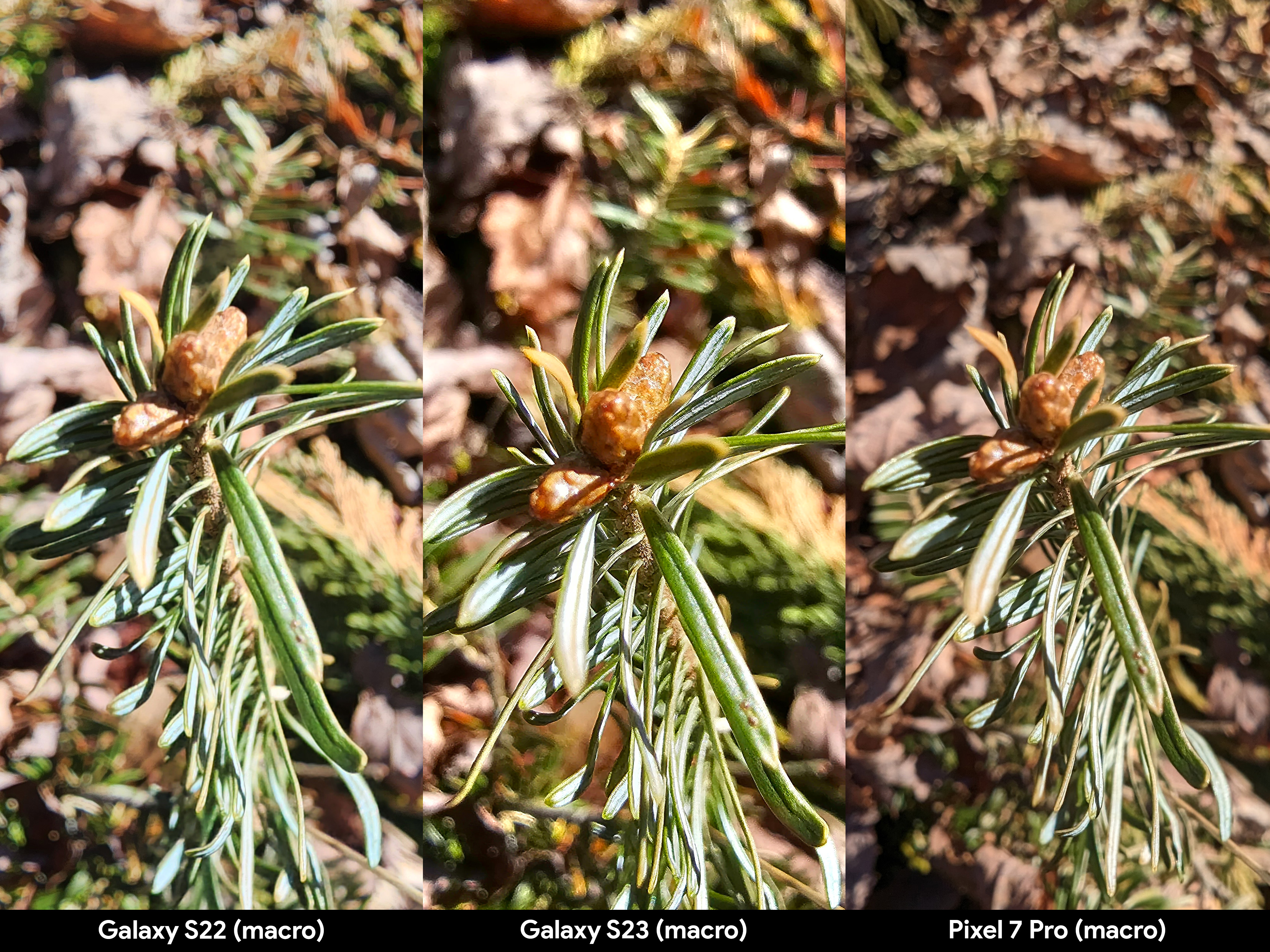
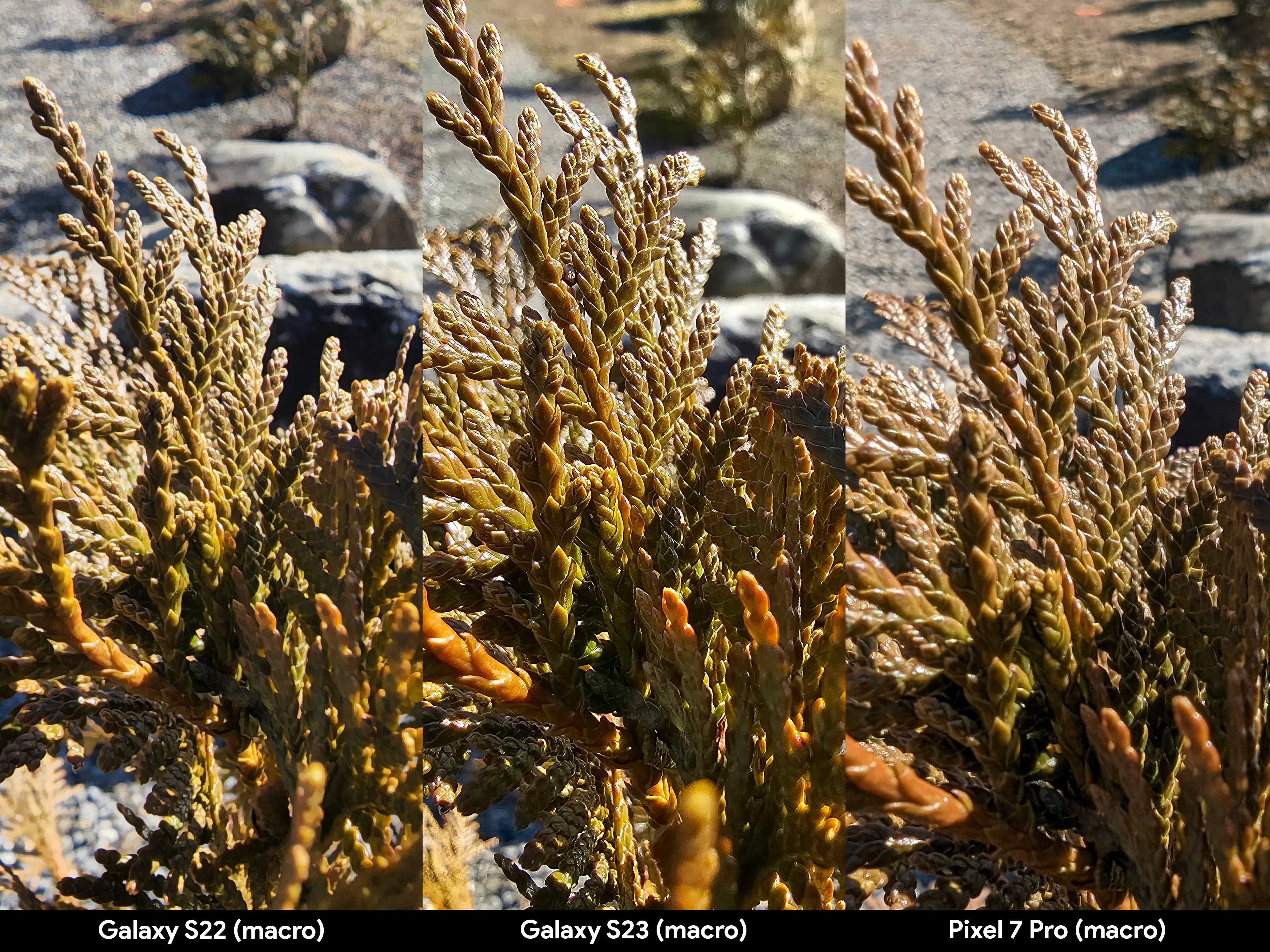
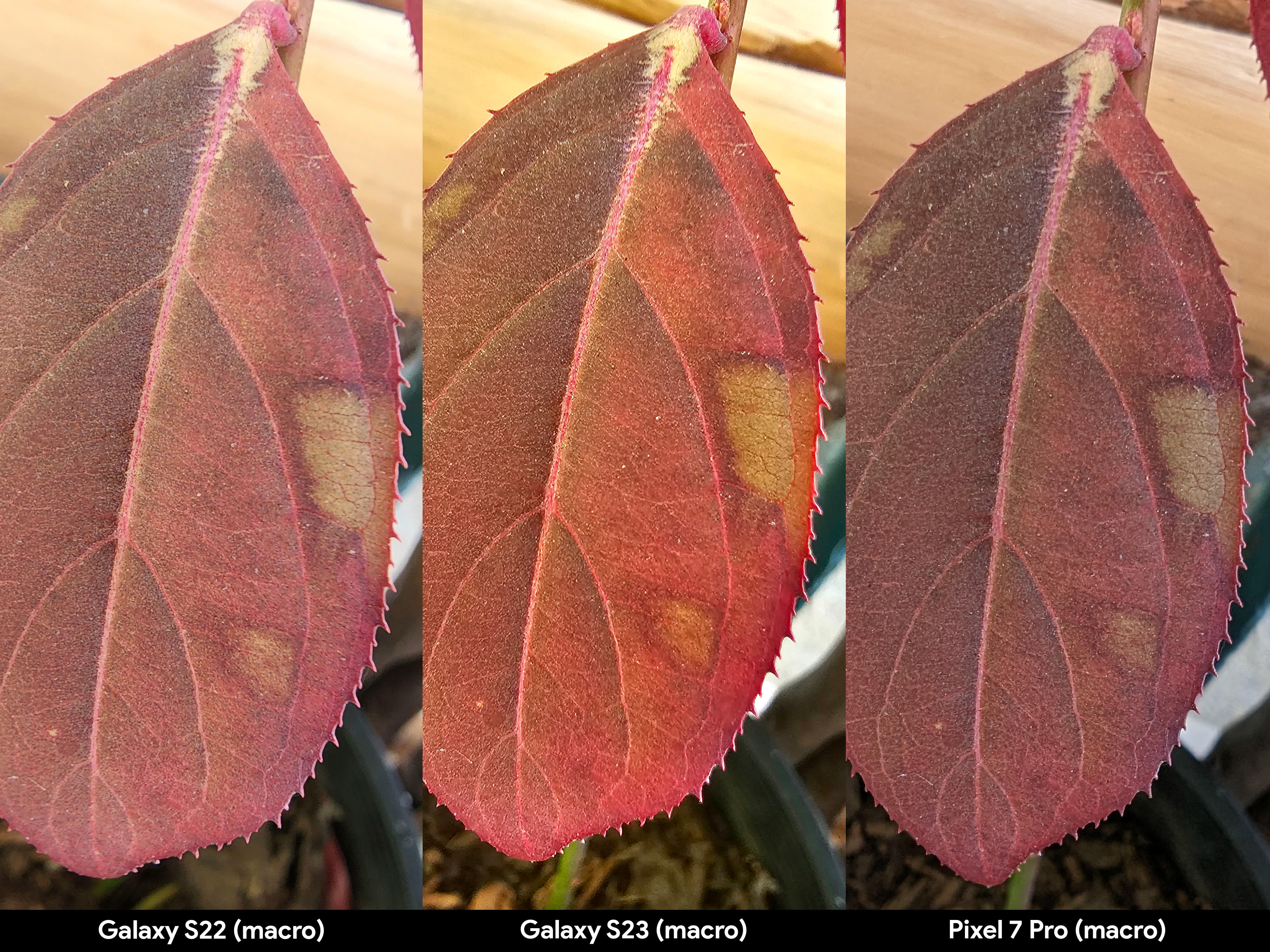
Macro imagery is one of the clearest areas where Samsung has improved with the Galaxy S23 Ultra.
Macro imagery is one of the clearest areas where Samsung has improved with the Galaxy S23 Ultra. Macro photography is super easy to use as you just need to get the camera close to a subject and the software will automatically switch to the camera that'll capture the best image.
All of the macro photos above were taken with small subjects that were moving in the wind. The Galaxy S22 Ultra had a very hard time with this particular niche of macro photography while the S23 Ultra clearly has no issue capturing a phenomenal image every time.
Front camera
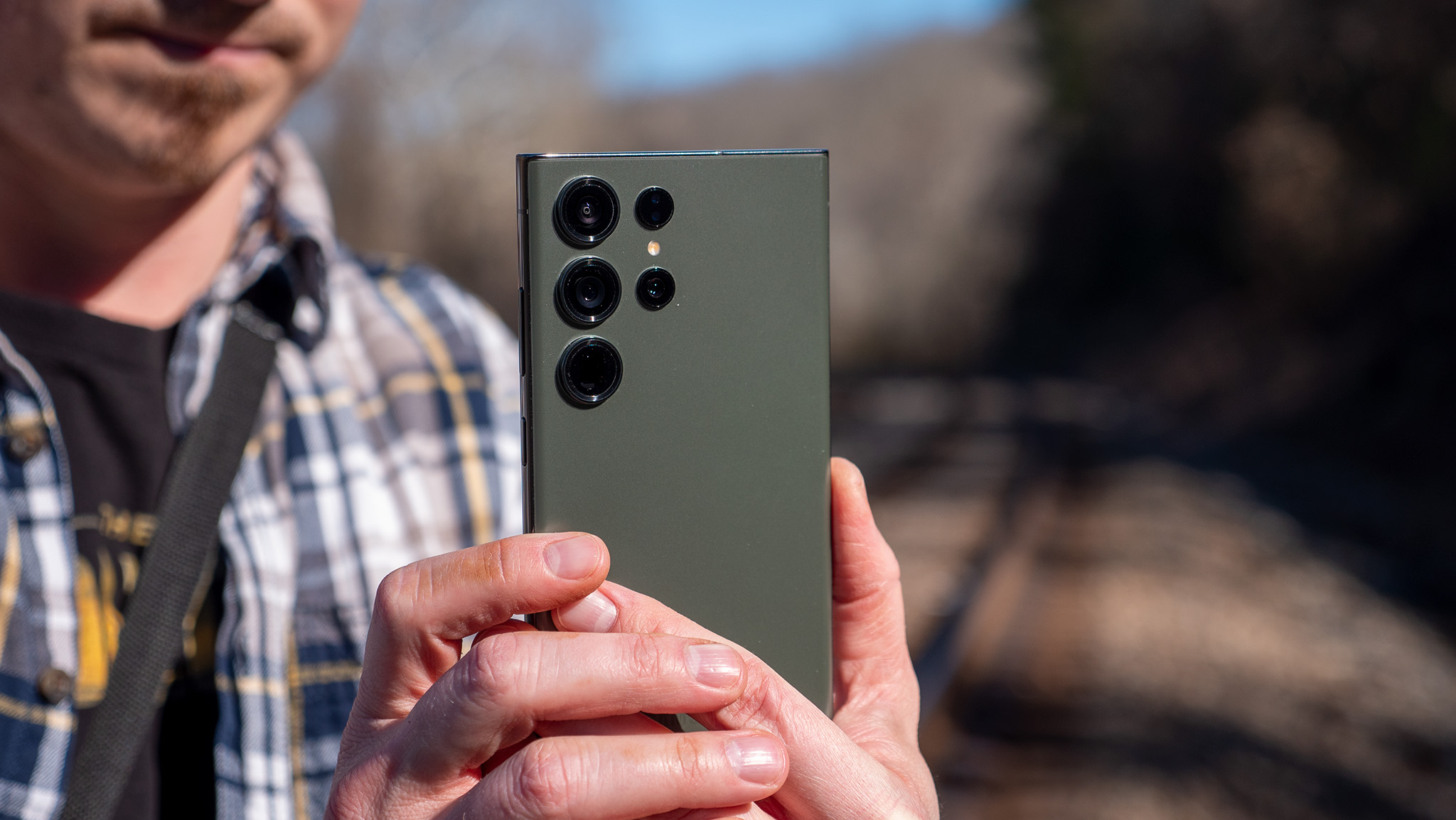
Samsung swapped out the 40 MP sensor from the Galaxy S22 Ultra with a new 12 MP sensor on the Galaxy S23 Ultra. While this seems backward from what we've come to expect in the smartphone world. But, while the megapixel count is lower, the quality is higher. In fact, this looks to be the new leader in front-facing cameras on the smartphones I've recently tested.
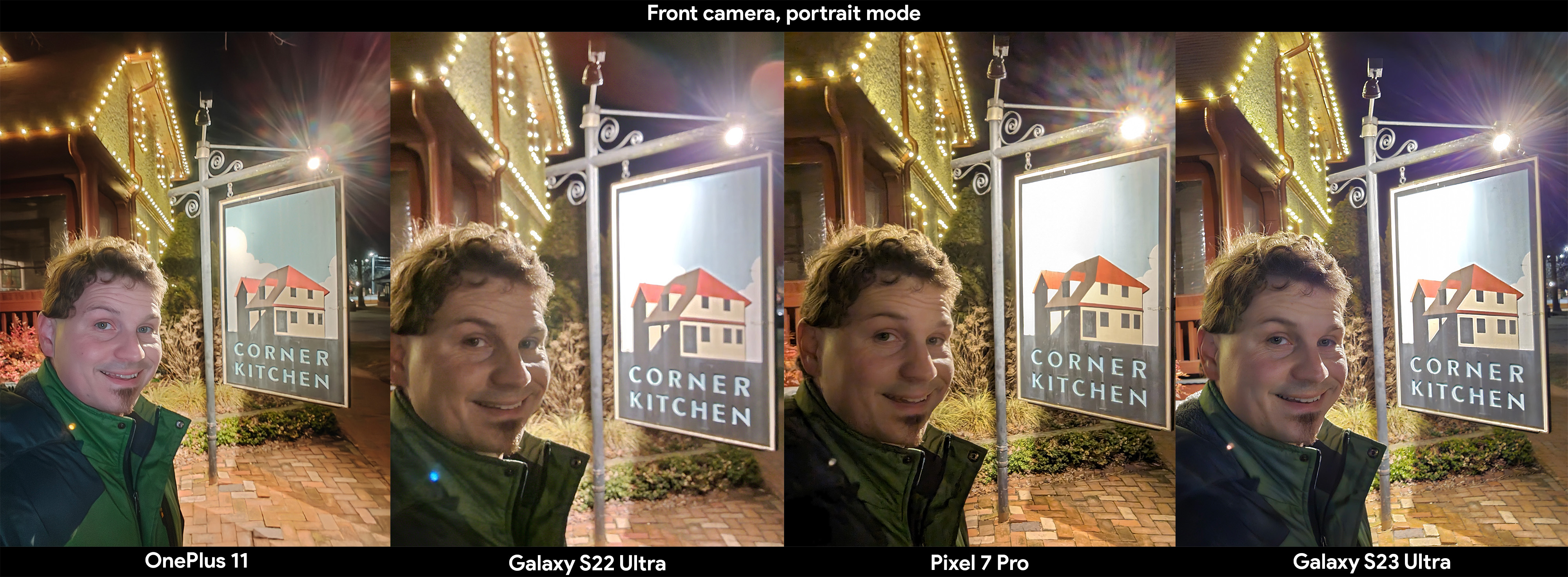
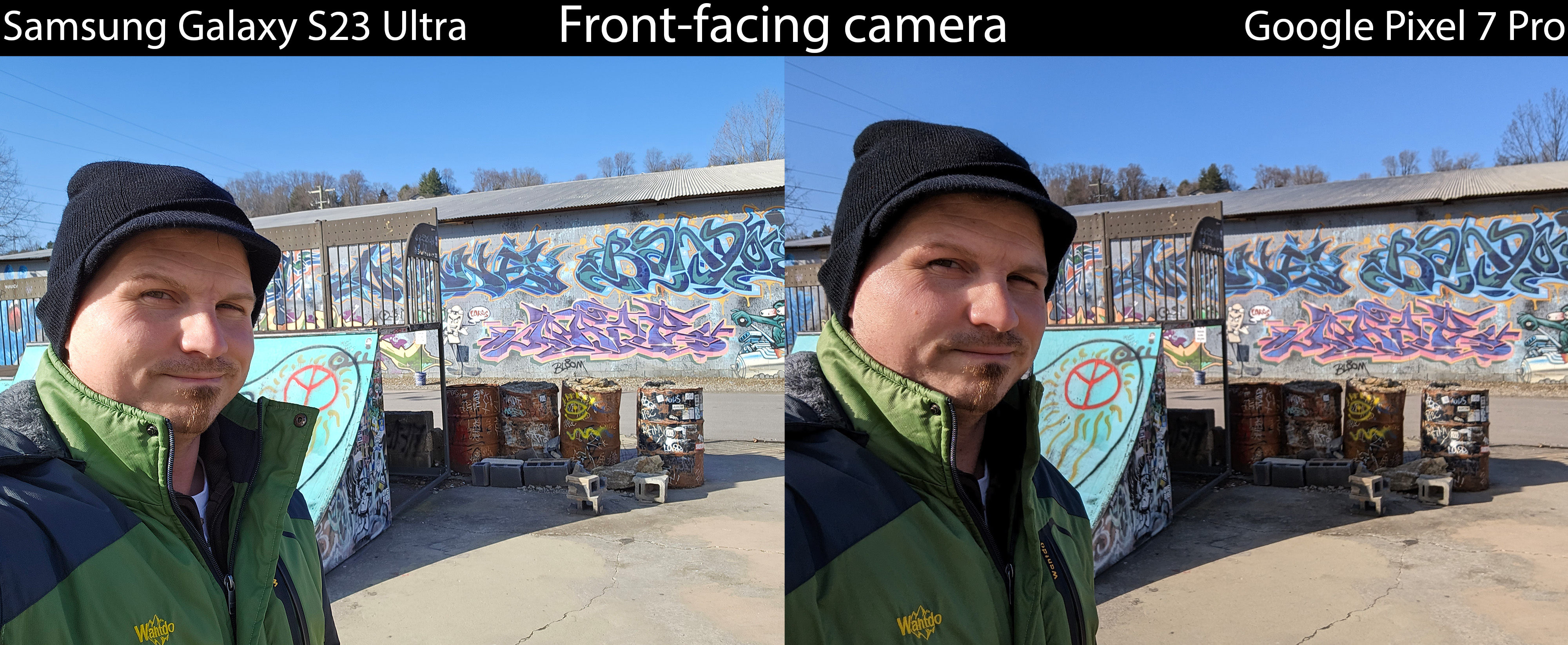
The Galaxy S23 Ultra's front-facing camera is the best in the business.
Front-facing camera quality, in general, is excellent. Both during the day and at night, the S23 Ultra's front-facing camera has superb dynamic range and it doesn't even require you to use night mode to get a good shot at night. The Pixel 7 Pro did a better job of exposing my face properly in the daylight shot above but the S23 Ultra is brighter all around, just in case you wanted to see what's in the background a bit better.
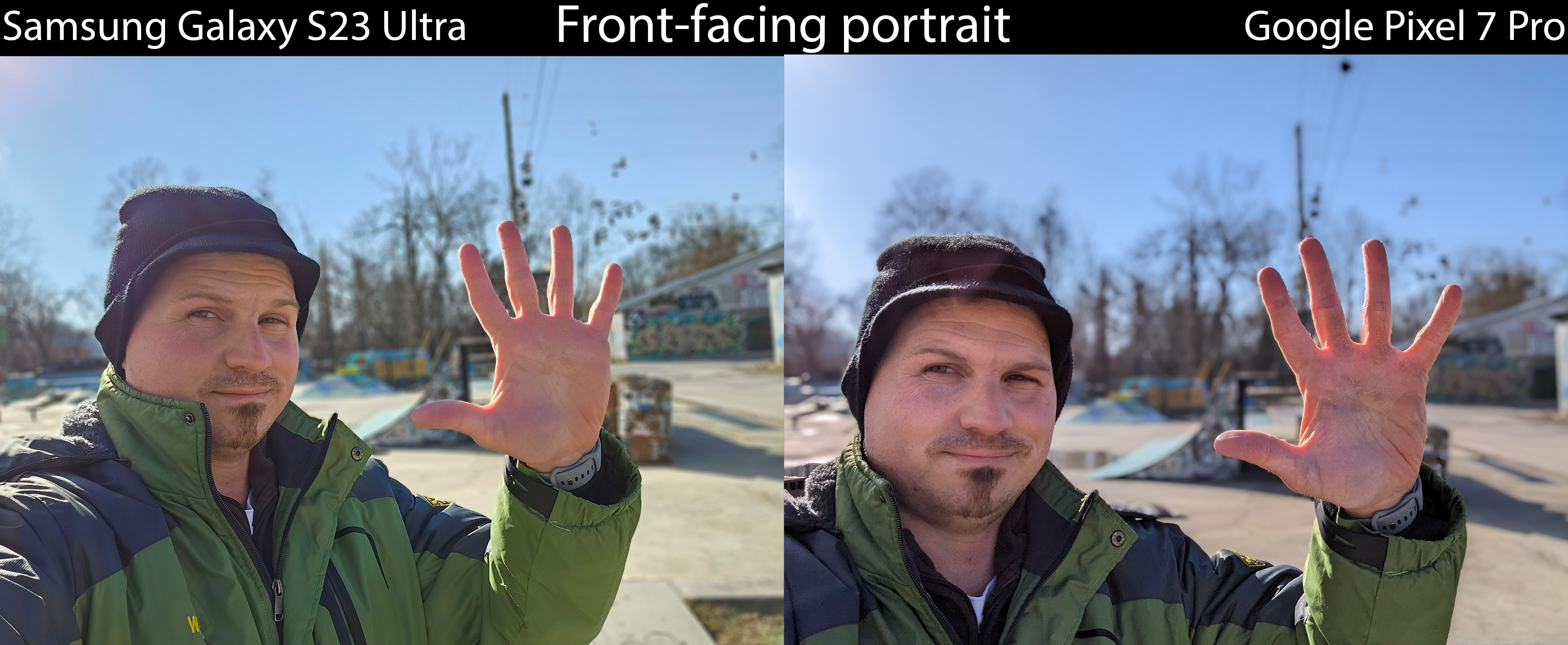
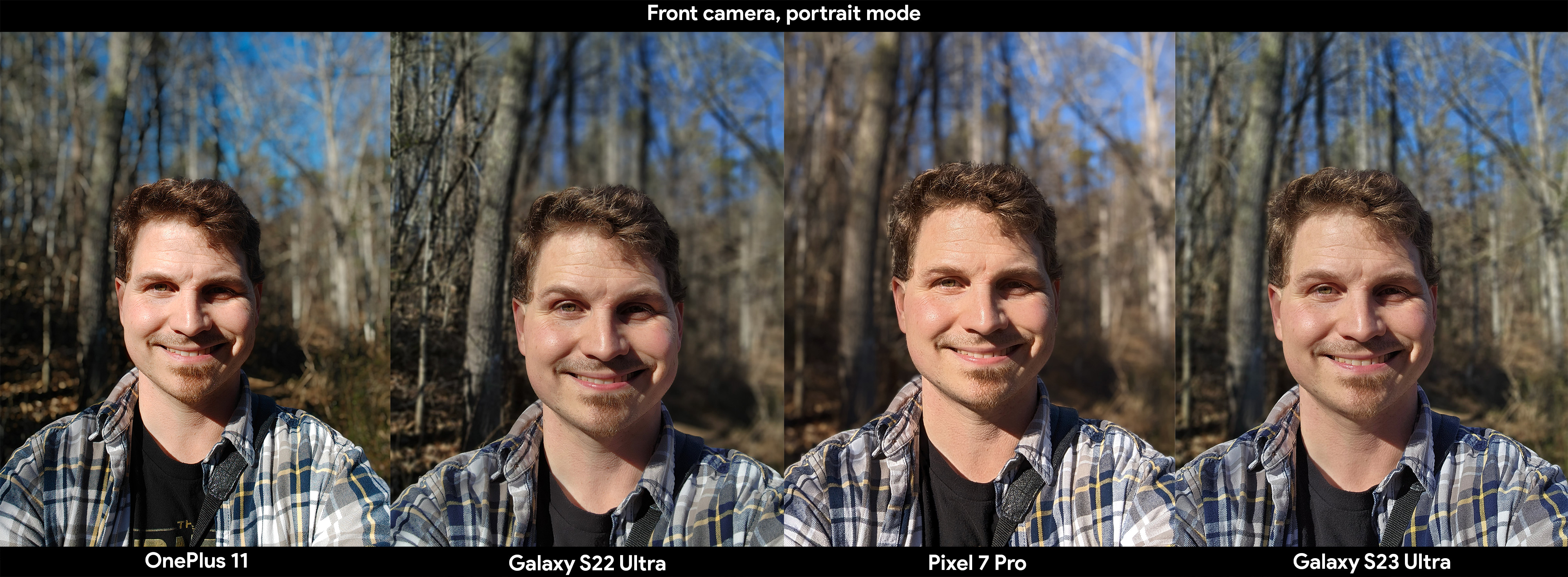
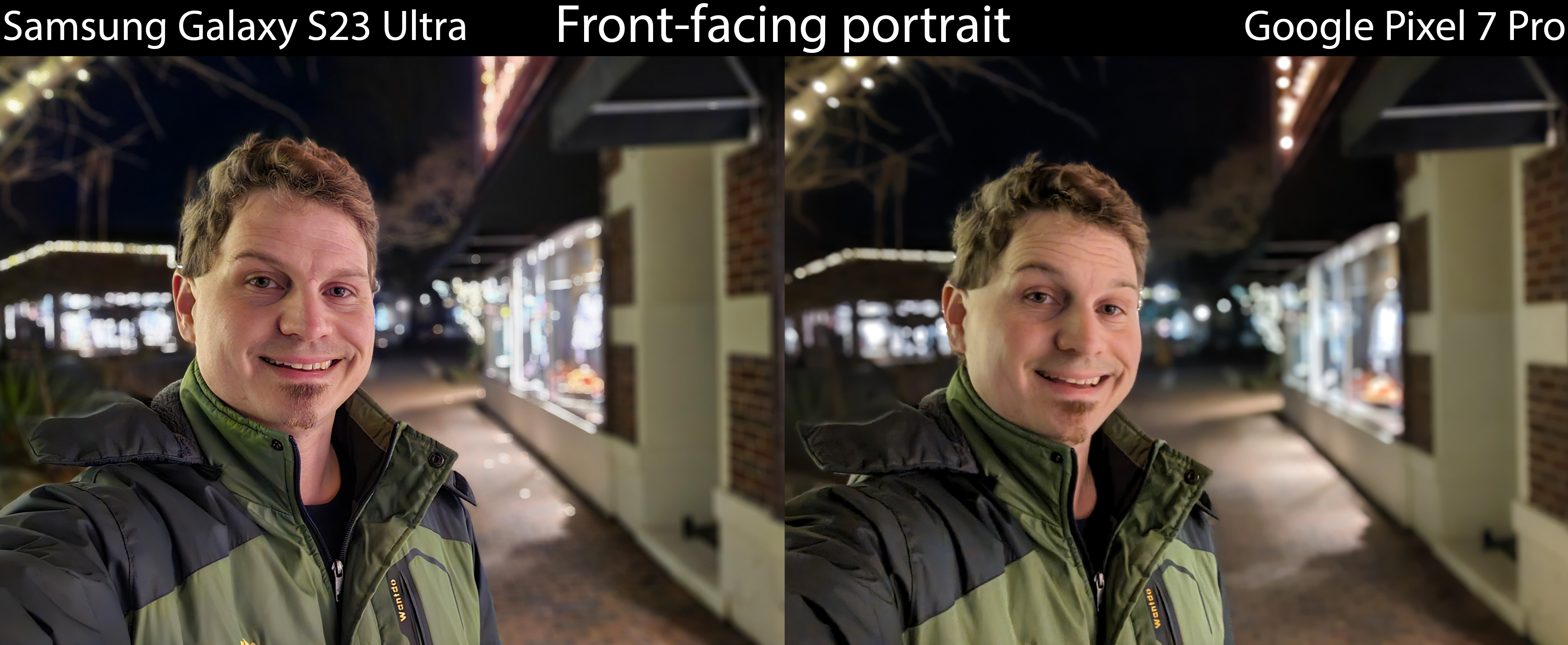
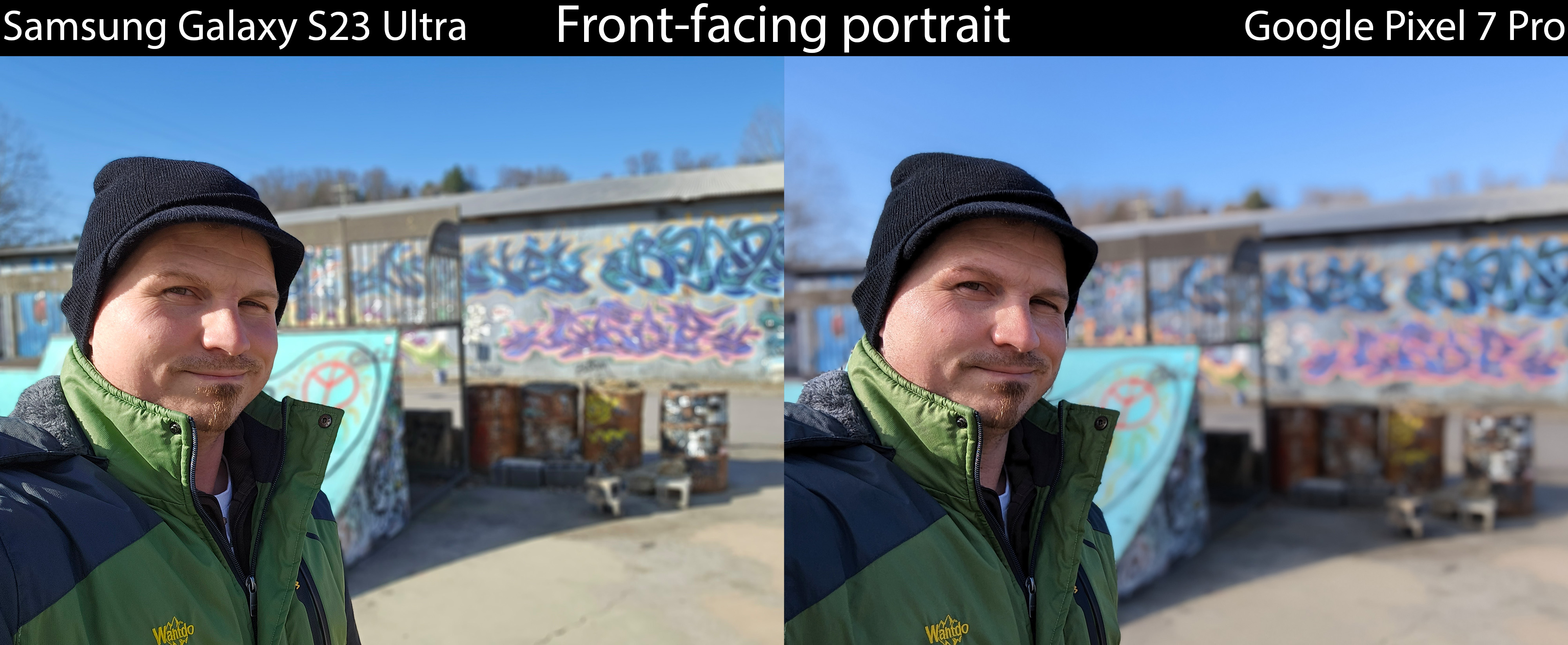
The S23 Ultra has the best quality portrait mode out of all the cameras I tested.
Onto portrait mode, the S23 Ultra does the best job out of all the cameras I tested. It has superb edge detection enabled by Samsung's latest object-detection AI advances and it blows Google's methodology out of the water. I found more than one occasion where the Pixel 7 Pro messed up the contrast a lot (look at my hand in the open palm shot). It definitely didn't look like that, as the S23 Ultra shot proved.
In low light, it most often produced the clearest shot overall. Not only were the edges around me cut out essentially perfectly — with gorgeous focus fall-off that looks like a "proper" camera — but the overall picture of me was sharp and in focus. I can't say the same thing about all three other phones I tested here, especially in low light. It's actually surprising how poor the Pixel 7 Pro's shots look in most of these examples.
Video tests
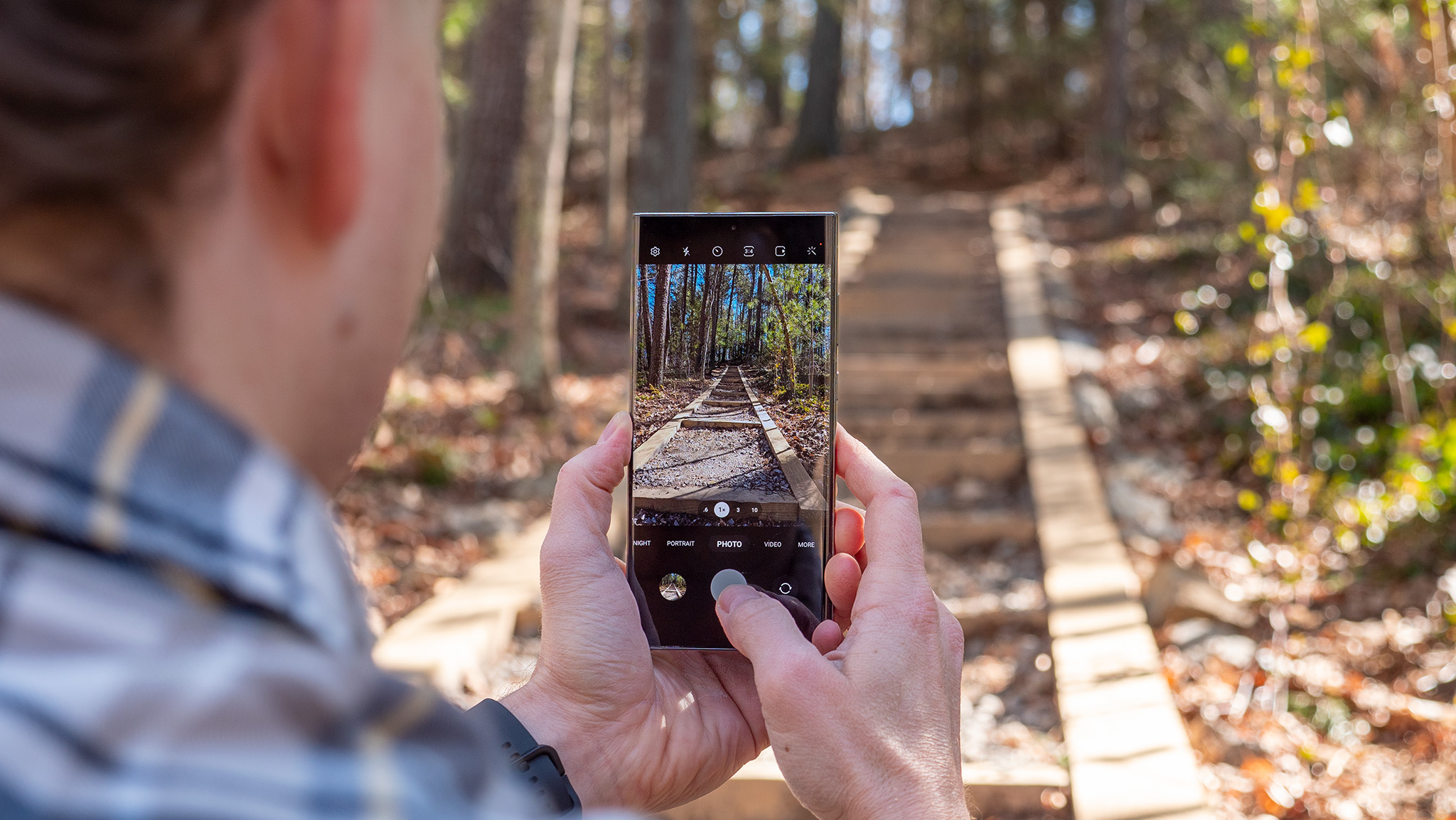
If the Pixel series has proven anything over the years, it's that video quality is not the same thing as photo-taking quality. It takes two very different trains of thought to make a good photo or video mode, and the best Samsung phones have traditionally always had strong video recording skills.
Those skills have received an upgrade with the Galaxy S23 Ultra, particularly in the main 200MP sensor which is now brighter and records smoother video than ever. The optical image stabilization gimbal inside is able to move twice as wide on all axis' this time around, moving up to a full 3 degrees in any direction needed to help mitigate movement.
For these tests, I set each camera to record in 4K quality at 30FPS. This is typically a good medium between video quality and stabilization quality, as both phones have stabilization enabled by default. No other settings were changed.
During playback, you'll see the speaker icon appear on the side where the audio is coming from. Only one audio source is playing at a time and they swap every 4 seconds.
Samsung's Galaxy S23 Ultra handily beats the Pixel 7 Pro.
Samsung's Galaxy S23 Ultra handily beats the Pixel 7 Pro in this example. By and large, both phones' video quality are both excellent, exhibiting great color reproduction and detail without looking fake or oversharpened. But that's where the comparisons end here.
In the first half of the video, you can hear how much noise the Pixel 7 Pro picks up while the Galaxy S23 Ultra's video sounds like there's no wind at all. That's fantstic.
Samsung's video is also significantly more stable, especially in the second half of the video when I start running around.
During the night, we see the same pattern with stability. Samsung's Galaxy S23 Ultra video recording at 4K is supremely stable, even when running. You'll notice more jitter here than you'll find during the day but it's an admirable improvement over other phones. Otherwise, overall quality is pretty similar between the two, with the Pixel 7 Pro producing slightly more accurate colors in some portions of the video.
Front-facing camera video
Samsung's software appears to have gotten smarter, and overall video and audio quality are superb on the Galaxy S23 Ultra.
Onto the the front-facing camera, which I also set to 4K quality at 30FPS for both phones. This test took place on the same extremely windy day as the previous video, but I was able to walk near a garbage truck emptying a dumpster to test out the front-facing camera's ability to distinguish the person's voice from background noise.
While I fully expected Google's Pixel 7 Pro to walk away victorious here — Google has a special feature enabled by default that uses AI to analyze mouth movements and match those up with speech that the phone hears — Samsung's software appears to have gotten smarter, as well.
The difference here is that Samsung's background cancellation algorithm ends up making my voice sound tinny, while Google's does a better job of keeping it sounding natural despite loud background noise. The downside is that you can hear more of the background noise in the Pixel 7 Pro's video, so the difference here is probably down to a personal preference rather than a superior method.
At night, Samsung certainly takes the cake.
At night, Samsung certainly takes the cake. For whatever reason, it seems like Google's noise canceling doesn't work well (or at all) in the dark. Every time a car goes by, you can clearly hear it in the Pixel's video while it's significantly downplayed in the S23 Ultra's video.
You'll notice the same tinny sound coming from Samsung's video any time it's doing hard noise cancelation but, overall, it sounds better and picks up my voice more clearly. Quality is also better than the Pixel 7 Pro although not by leaps and bounds throughout most of the video.
In closing
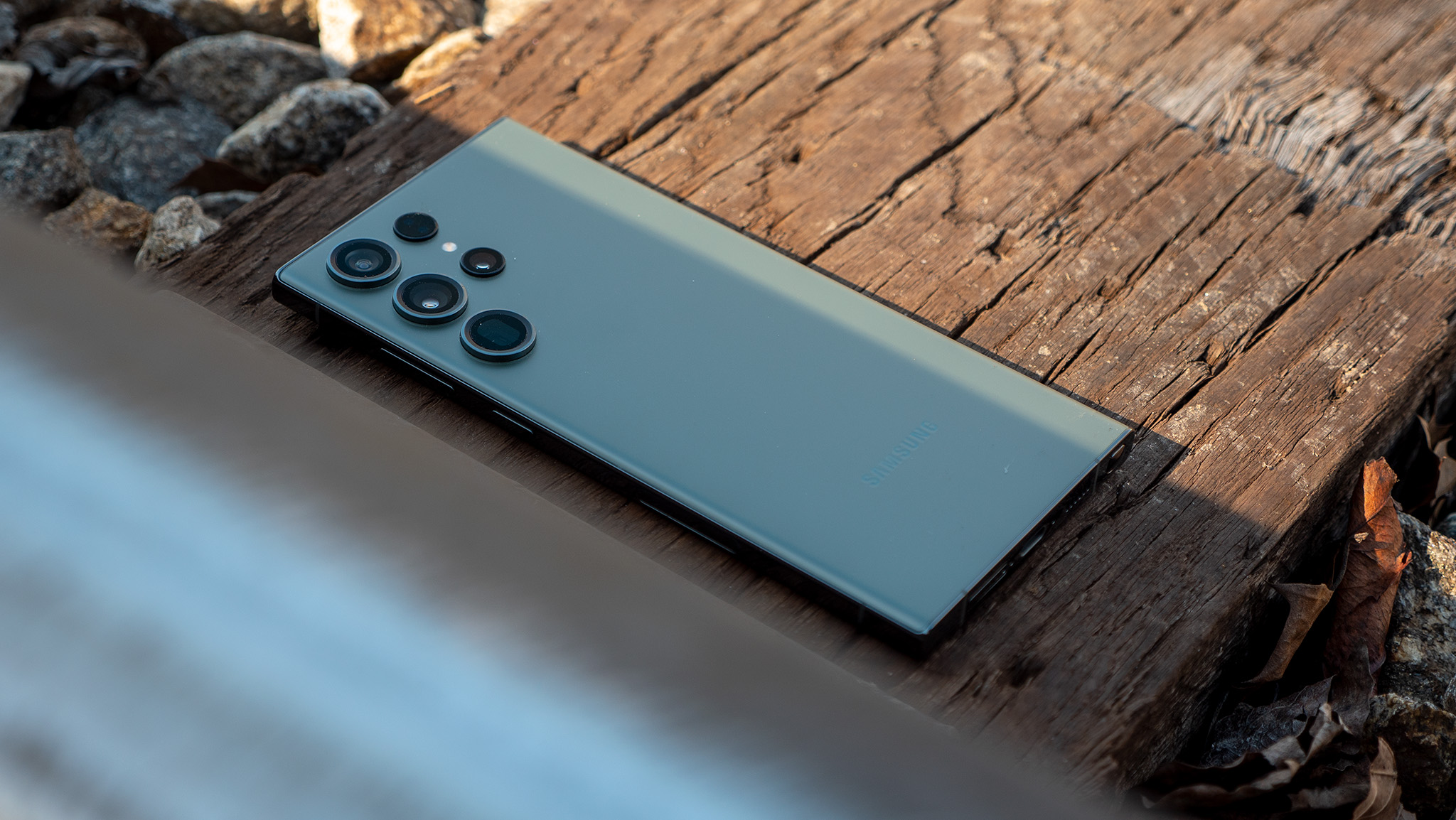
Samsung has made some huge improvements in some areas and walked away with the best video capture, best front-facing camera, and best portrait mode in this business. This should be no surprise to anyone who has used a premium Samsung phone in recent years.
The Galaxy S23 Ultra also remains the zoom champ in most circumstances, able to zoom beyond 10x while still providing a crisp, clean, well-exposed image in most cases. But there's a level of inconsistency in overall exposure that we didn't see with the Galaxy S22 Ultra, and that doesn't just apply to the telephoto cameras, either.
The main sensor, despite the huge detail gains that the 200 MP sensor brought forth, seems to have significant trouble getting exposure right. This doesn't happen in every shot but it happens far too often on a phone that costs well over $1,000. It's also not something we saw happen to this degree last year with the S22 Ultra.
Ultra-wide quality also took a nosedive, with worse low-light performance than the S22 Ultra and overall quality lacking when compared to other premium Android phones. Samsung was able to improve macro photography substantially, however, and now has the best macro camera in the Android world.
And while the Camera Assistant app does help the phone better capture movement in photos, Samsung still can't match Google's prowess when it comes to capturing photos of kids or pets. All in all, this is both a great and disappointing release.
It's more than just "two steps forward, one step back." If anything, it feels like the needle hasn't been moved forward at all, just sideways.

